Weird (and other) Fruits I Have Eaten
Supermarkets have fruit. In fact, they have loads and varieties of different fruits. But most places have the usual variety of bananas, apples, oranges, etc. I need something more, something exciting, something...weird. One of my favorite things to do is scope out new supermarkets for different fruits I've never tried before. I've had some that are amazing and some that are just "eh." Here, in no particular order, are many of the unusual ones I've tried.
I used "The Illustrated Encyclopedia of Fruits, Vegetables, and Herbs" and "Tropical Fruits and Other Edible Plants of the World" as my main references. Pictures pulled from WikiMedia Commons
Plantae
Angiosperms
Eudicots
Asterids
Caryophyllales
Cactaceae
Cactoideae
Hylocereus
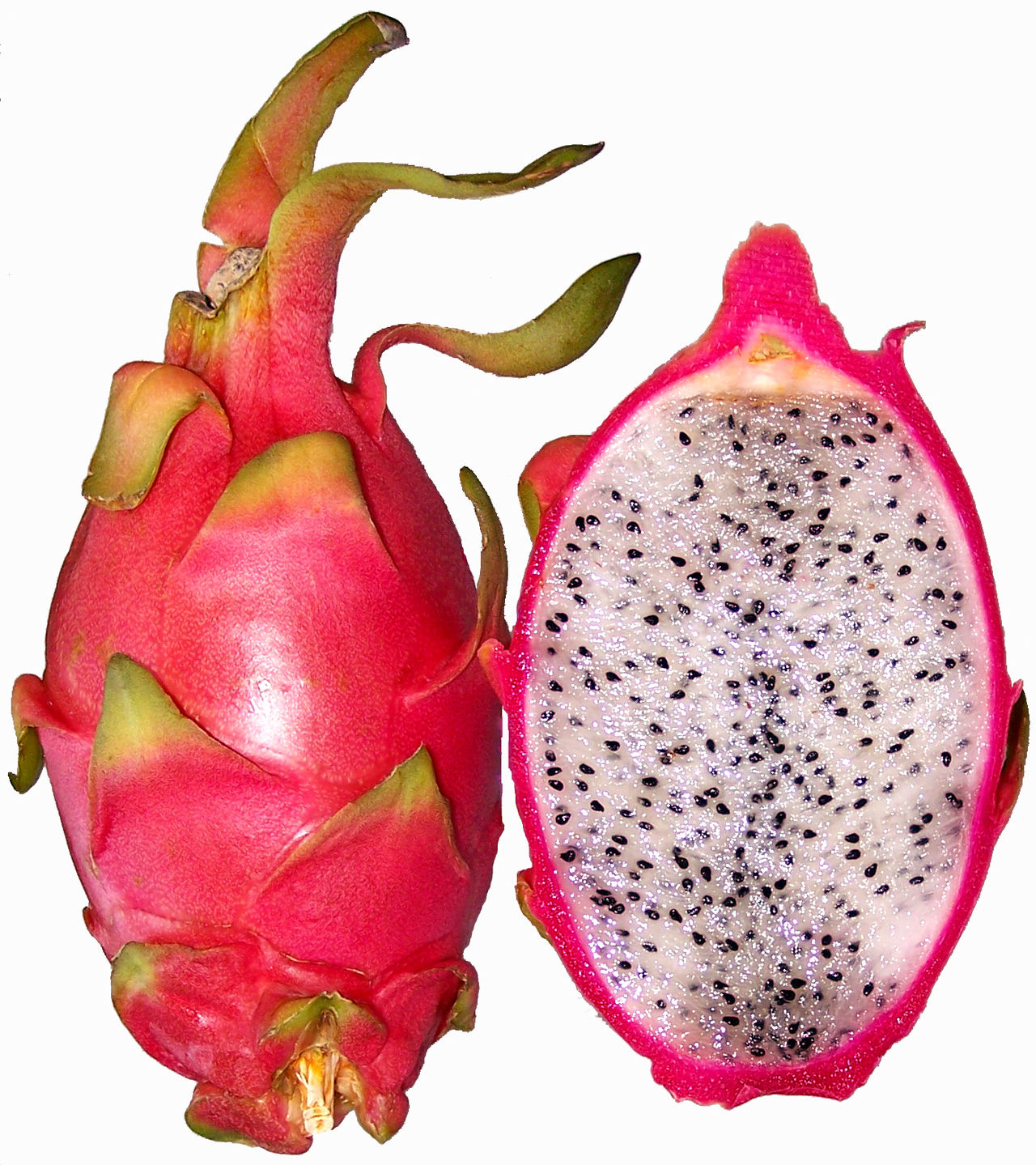
T.Voekler [CC BY-SA 3.0 (https://creativecommons.org/licenses/by-sa/3.0)]
H. undatus (white dragonfruit)
This fruit is ridiculously flashy and over the top. Inside, you'll find a fruit that looks like an albino strawberry or kiwi. The fruit is honestly just crunchy and a bland sweetness, but I still like eating them for whatever reason. It can be blended into a smoothie or used in fruit salad.
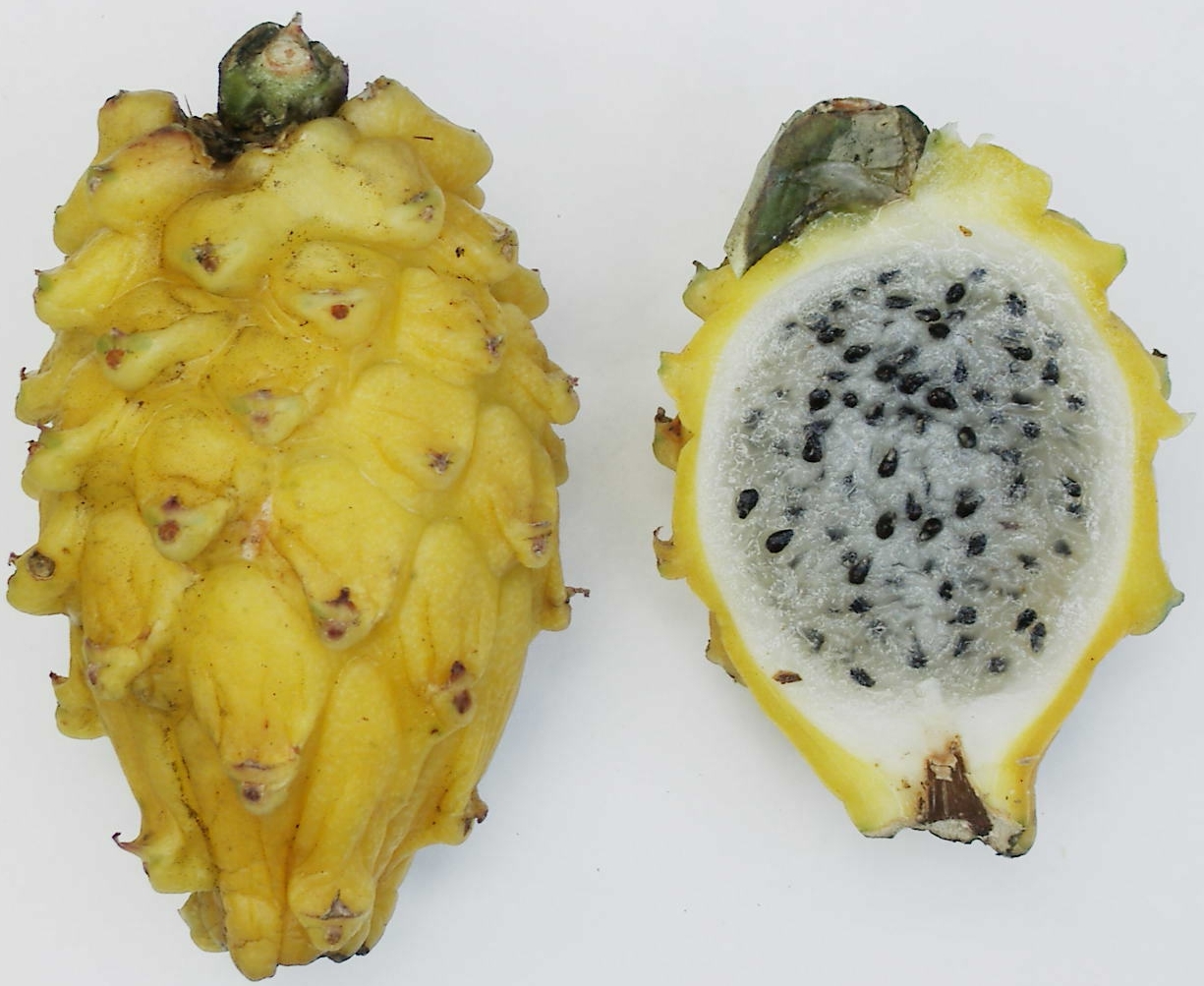
Fibonacci, Wikimedia Commons
H. megalanthus (yellow dragonfruit)
Not to be confused with its blander cousin, this is one of my favorite fruits. Cut it in half and be greeted with the translucent flesh containing tiny black seeds. It's one of the most delicious, sweetest things I've ever eaten. It tastes like pure sugar and is so sweet and refreshing. They're hard to find but worth buying whenever you can. As a member of the cactus family, they actually grow spikes!
Opuntioideae
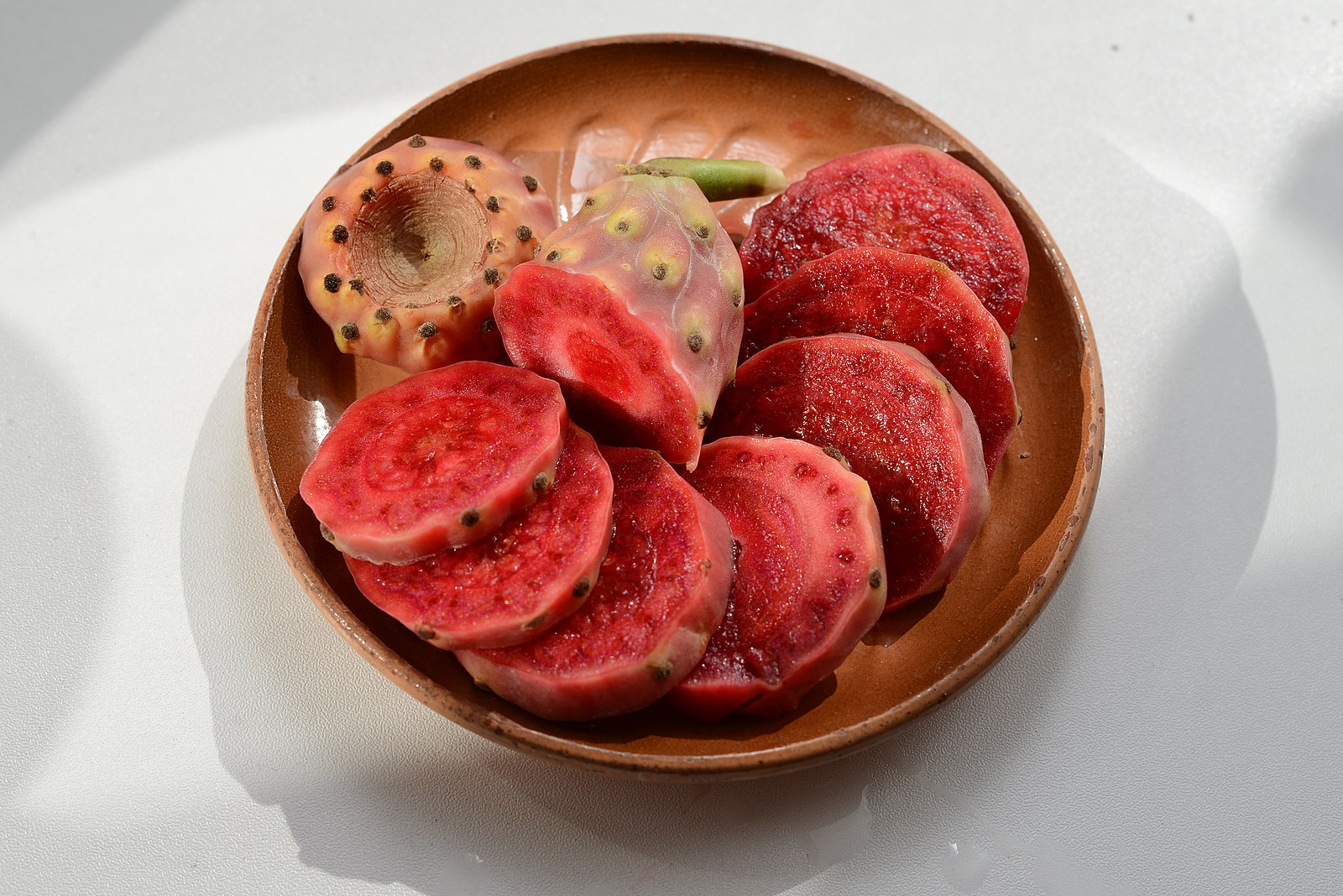
WM wm WM / CC BY-SA (https://creativecommons.org/licenses/by-sa/4.0)
Opuntia (prickly pear)
Eating cactus? Why not! The prickly pear is the fruit of the cactus (makes sense) and these are native to Mexico. I cut off the ends, peel, and slice, but apparently it's easier if you slice in half then scoop out with a spoon. Watch out for the tiny spikes, which although not dangerous, can prick the skin and be hard to remove and very bothersome. The seeds are relatively large but edible - just swallow, don't chew them. The fruit is also sometimes known as tuna.
Ericales
Actinidiaceae
Actinidia

Theo Crazzolara [CC BY-SA 2.0 (https://creativecommons.org/licenses/by-sa/2.0)]
A. deliciosa (kiwi)
Familiar to most people, it's a strangely fuzzy fruit with extremly tart inside flesh that requires scooping. Apparently the skin is edible, but most people don't eat it because it's hairy and weird. It's an excellent source of vitamin C and contains actinidin, which can be used to tenderize meat. For whatever reason, I was never a fan, until...
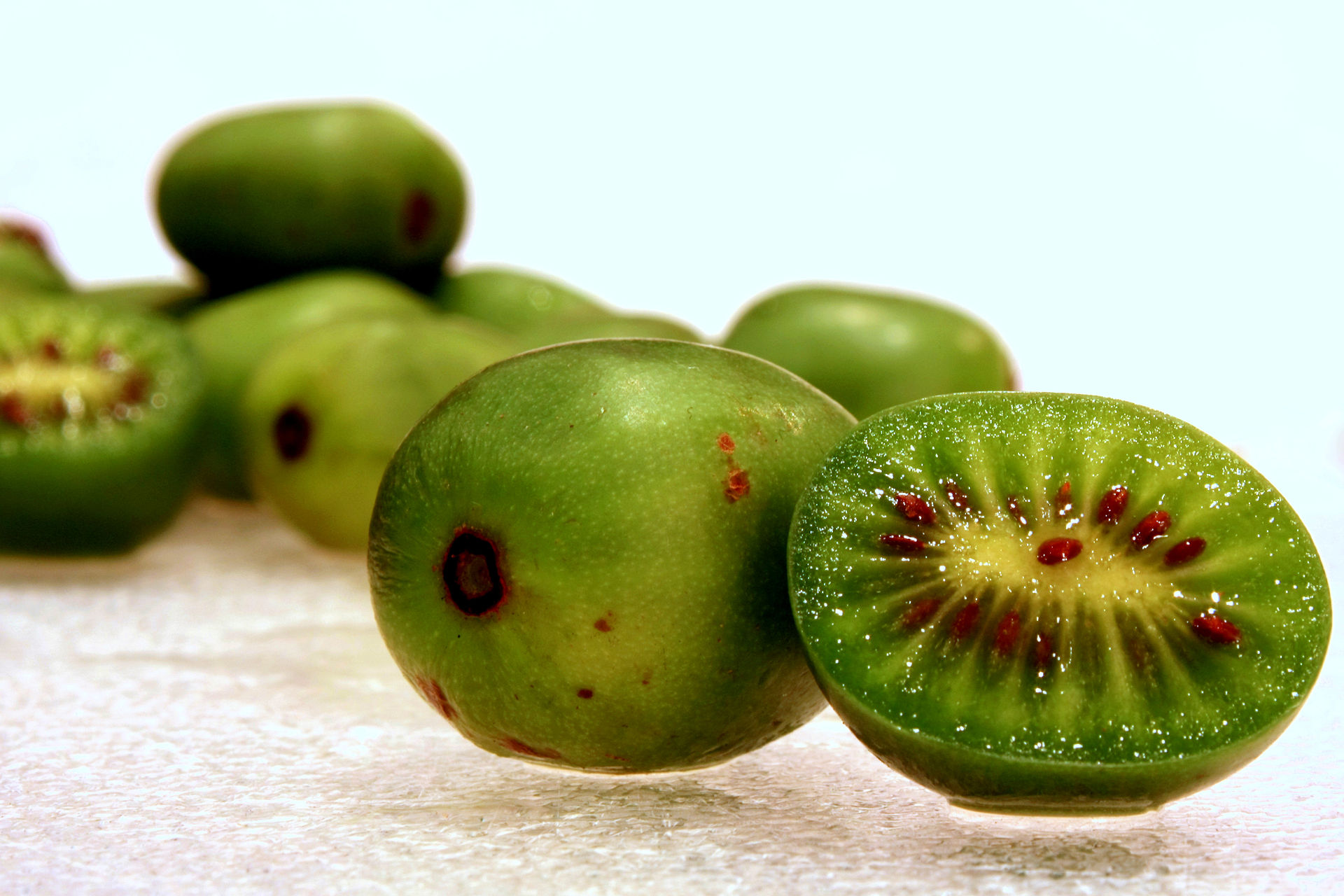
Hiperpinguino [CC BY-SA 3.0 (https://creativecommons.org/licenses/by-sa/3.0)]
A. arguta (kiwiberry)
I discovered the true hero of the kiwis! A smaller and hairless version of the kiwi, these can be eaten whole and maintain the tart flavor but with a sweeter taste (if that makes any sense). Trust me, these are awesome.
Ebenaceae
Diospyros
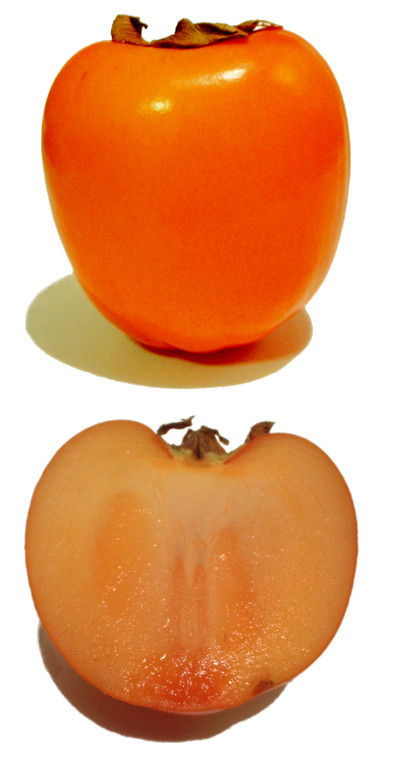
FoeNyx WikiMedia Commons
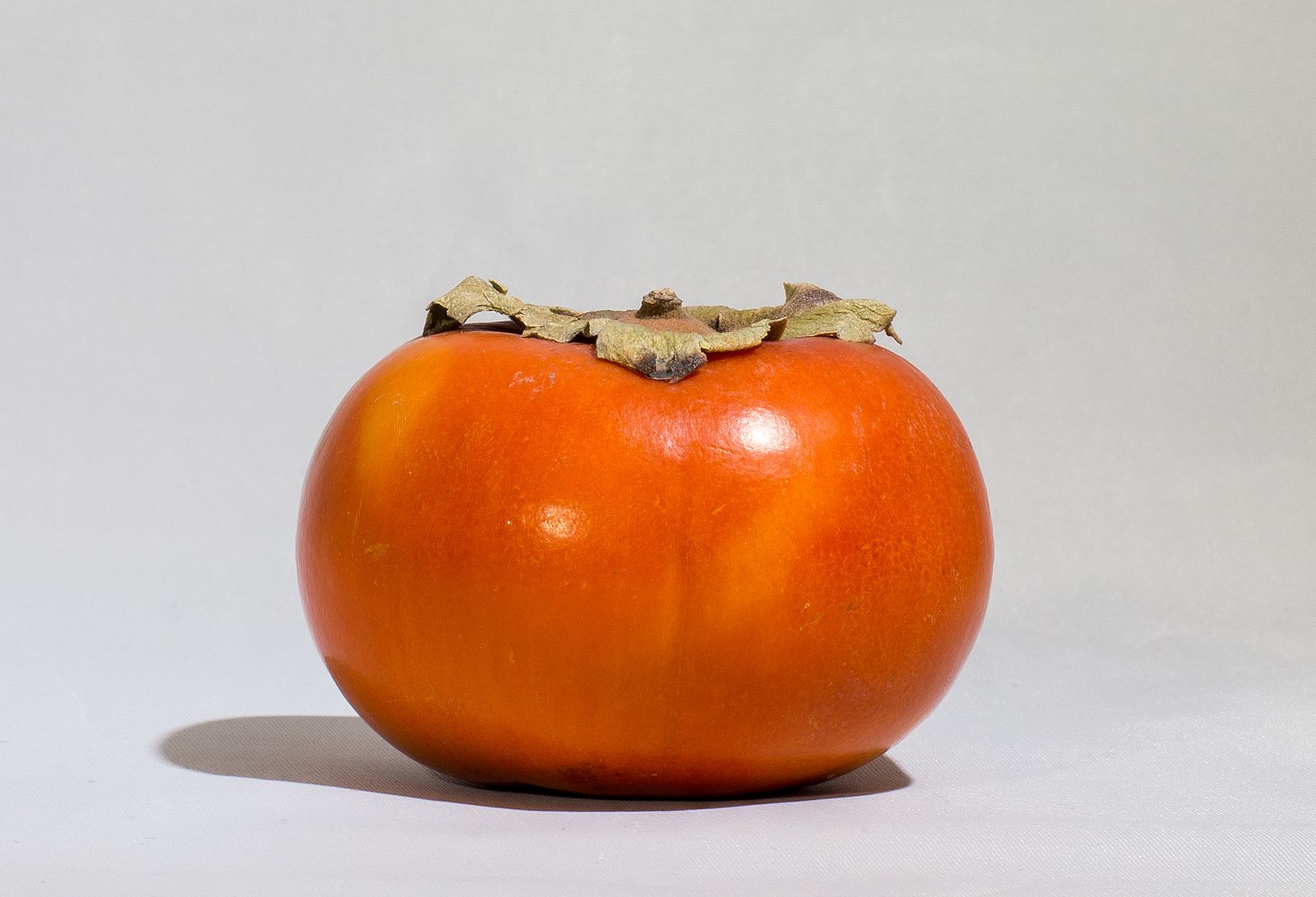
Rhododendrites / CC BY-SA (https://creativecommons.org/licenses/by-sa/4.0)
D. kaki (persimmon)
A squat orange fruit, it has a delightful crunch when sliced and eaten raw, although the peel can sometimes be a little bitter and leave an orange color on the tongue. Two varieties I'm more familiar with are the Hachiya (round and pointy) and the Fuyu (squat) varieties.
Ericaceae

Sander van der Wel from Netherlands / CC BY-SA (https://creativecommons.org/licenses/by-sa/2.0)

Bering Land Bridge National Preserve / CC BY (https://creativecommons.org/licenses/by/2.0)
Vaccinium (blueberries, cranberry)
I've grouped these together because technically there are multiple species of both blueberries and cranberries. I'm not a big fan of blueberries (much to my girlfriend's confusion), though I will eat them in muffins. How can you trust something that looks blue on the outside, green on the inside, and purple when smooshed? They originated in North America. Importantly, they can react with baking soda and turn a green color when cooked, so mix dry ingredients prior to adding the berries and minimize baking soda use. Cranberries, their relative, have a very tart taste and are often mixed with sugar when used in recipes. They are also native to North America and are closely associated with Thanksgiving dinner. They grow in bogs and can be harvested by flooding the bog! There is some debate as to whether cranberries can help prevent urinary tract infections (UTIs). The benefit is unclear, but the harm is minimal. Take tablets over juice, due to the decreased sugar content.
Sapotaceae
Chrysophyllum
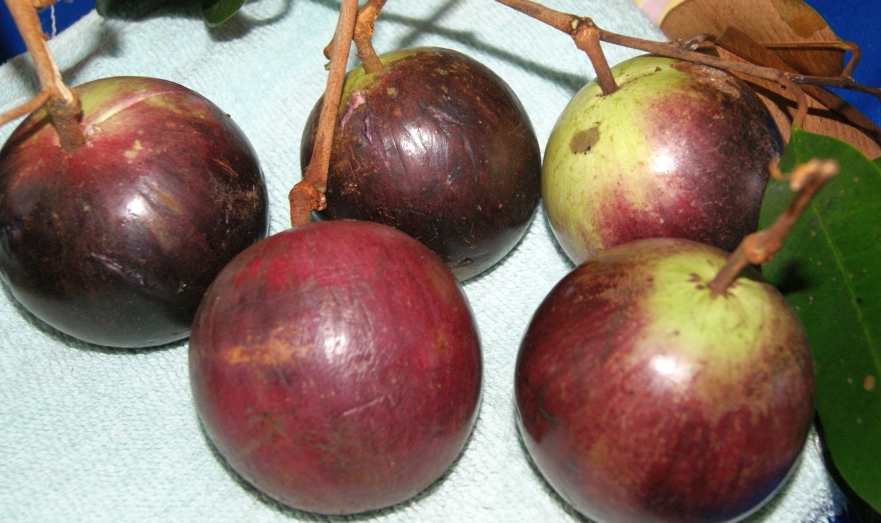
Alexcooper1 / CC BY (https://creativecommons.org/licenses/by/3.0)
C. cainito (star apple)
Finally tried one of these by accident when I found it at a fruit stall in Mexico. They look like a thick-skinned plum, but the inside contains delicious creamy sweet fruit, with a cross hatch pattern looking like a star! Don't be deterred by the strange milky fluid that leaks out when you cut it in half, it's part of the fun (I guess). The rind does contain latex (and is inedible). For a nice twist, combine with orange juice, sugar, nutmeg, and whipped cream for a Jamaican dish called "matrimony."
Pouteria
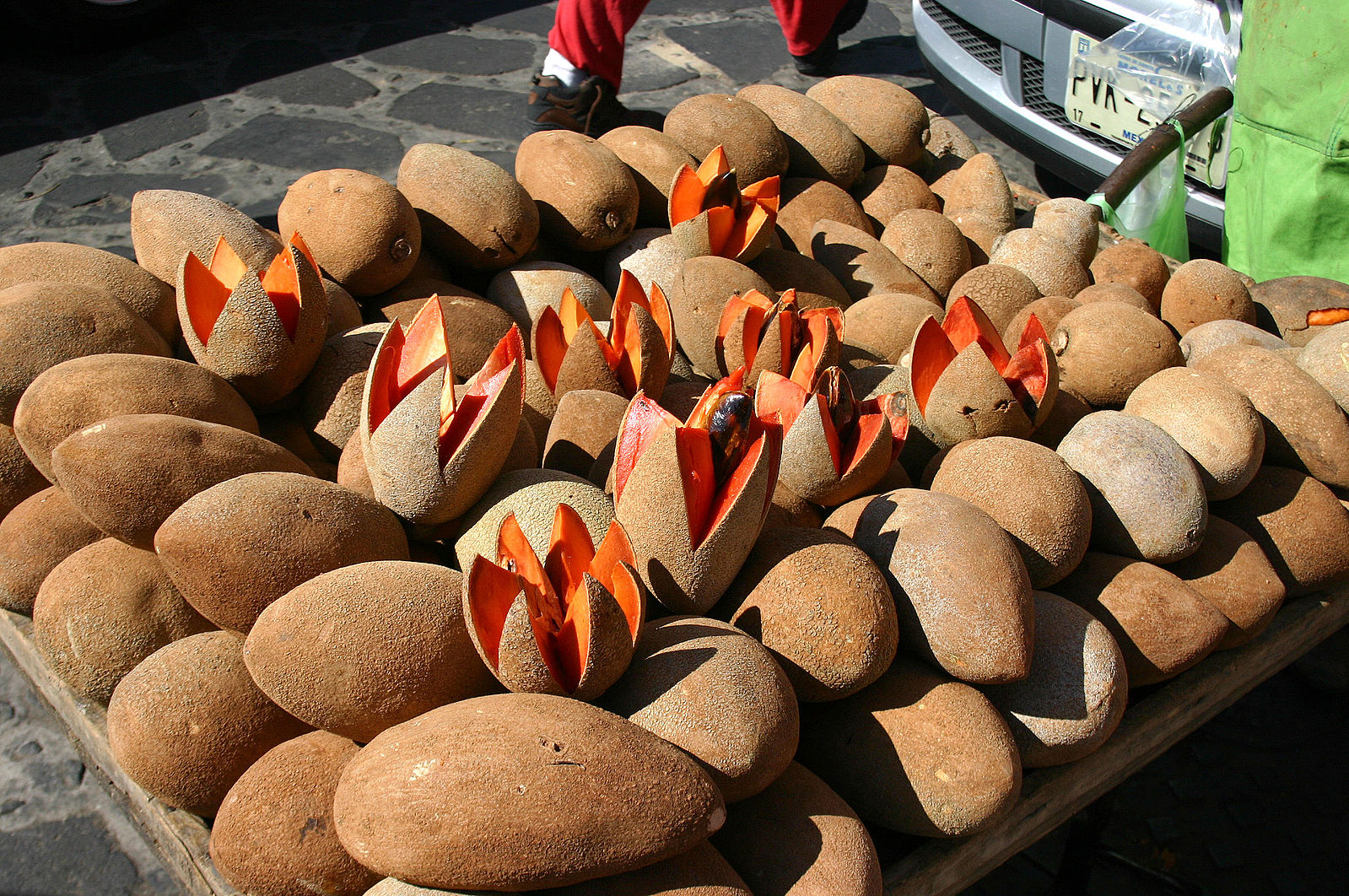
Meutia Chaerani / Indradi Soemardjan http://www.indrani.net / CC BY-SA (http://creativecommons.org/licenses/by-sa/3.0/)
P. sapota (mamey sapote)
These are big brownish fruits with a creamy orange flesh and a taste that's hard to describe, but one person describes as pumpkin plus sweet potato. In other words, it tastes orange. There's a big brown seed in the center, don't eat that. Sapote is Nahuatl (Aztec) for sweet, so you may notice other unrelated fruits with a similar name.
Solanales
Solanaceae
Solanoideae
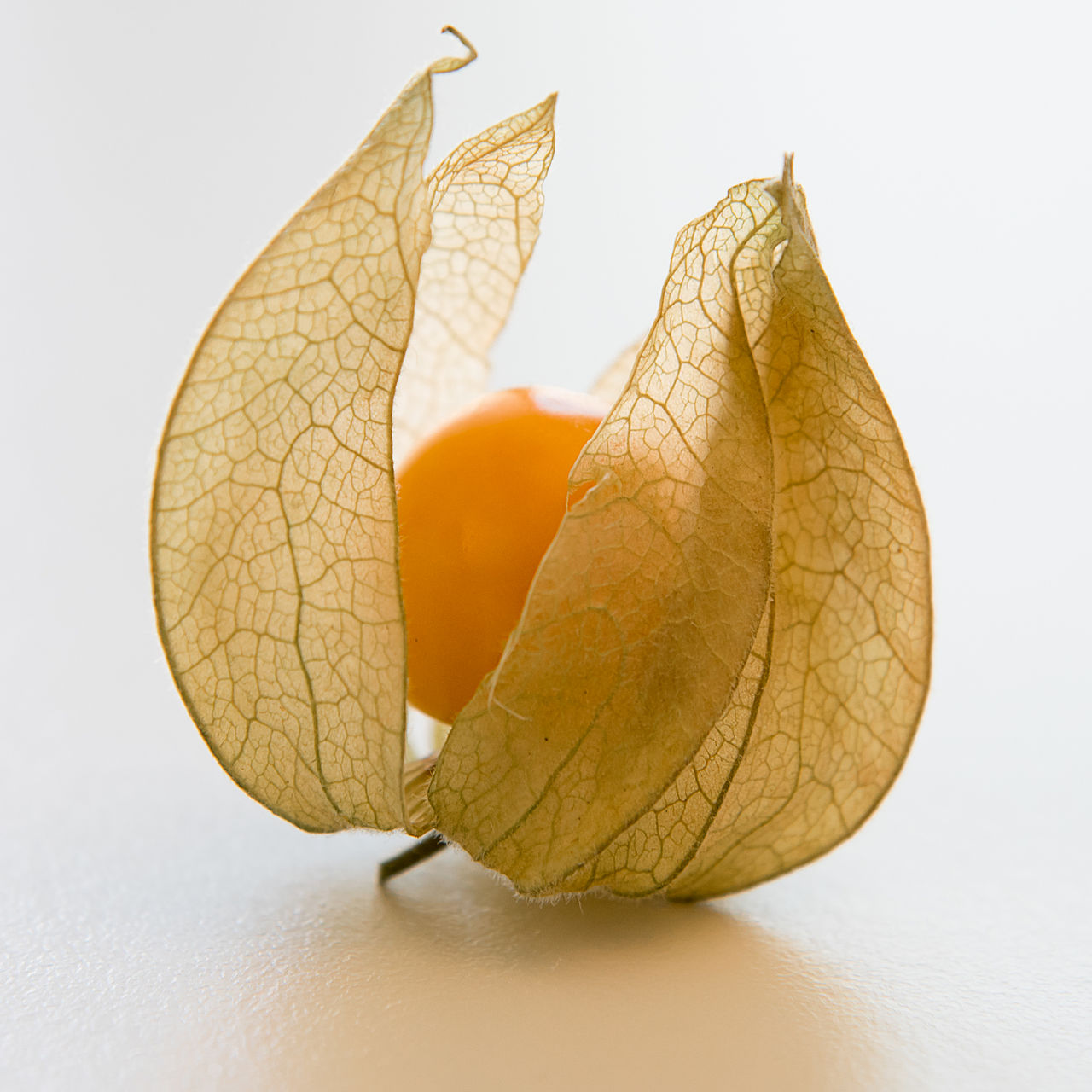
Mkatzmaier [CC BY-SA 4.0 (https://creativecommons.org/licenses/by-sa/4.0)]
Physalis (ground cherry)
Lots of fruits come with peels and rinds, but how many come in their own individual delicate packaging? Ground cherries have a sweet and slightly tart flavor. They are almost always pop when you bite down in a burst of flavor. They come covered in a thin wispy flower, which peels right off. For me, there's a little risk involved, because every once in a while one tastes a bit like a tomato (and I hate tomatoes).
Rosids
Brassicales
Caricaceae
Carica

Public Domain
C. papaya (papaya)
Not sure how I feel about papayas. Sometimes I buy them and they're great, other times they just don't do it for me. And don't get me started on those Dole tropical fruit cups...not a fan. I do like buying them whole and cutting them in half to find hundreds of tiny black pearl-like seeds with a gelatinous coating. Apparently the seeds are edible and taste spicy, who knew? Green unripe papaya needs to be boiled prior to eating as it contains latex. Most importantly, papaya contains papain, an enzyme that can be used as a meat tenderizer and is used to break down cells in the lab.
Cucurbitales
Cucurbitaceae
Citrullus

Flickr user laughlin from Tokyo, Japan / CC BY (https://creativecommons.org/licenses/by/2.0)
C. lanatus (watermelon)
Interestingly, watermelon originated in the Kalahari desert and was grown in ancient Egypt. Most people are familiar with eating the inner portion, but the rind can be eaten as well, as jam or side dishes. The fruit is 92% water (name makes sense). There are over 1000 varieties.
Cucumis
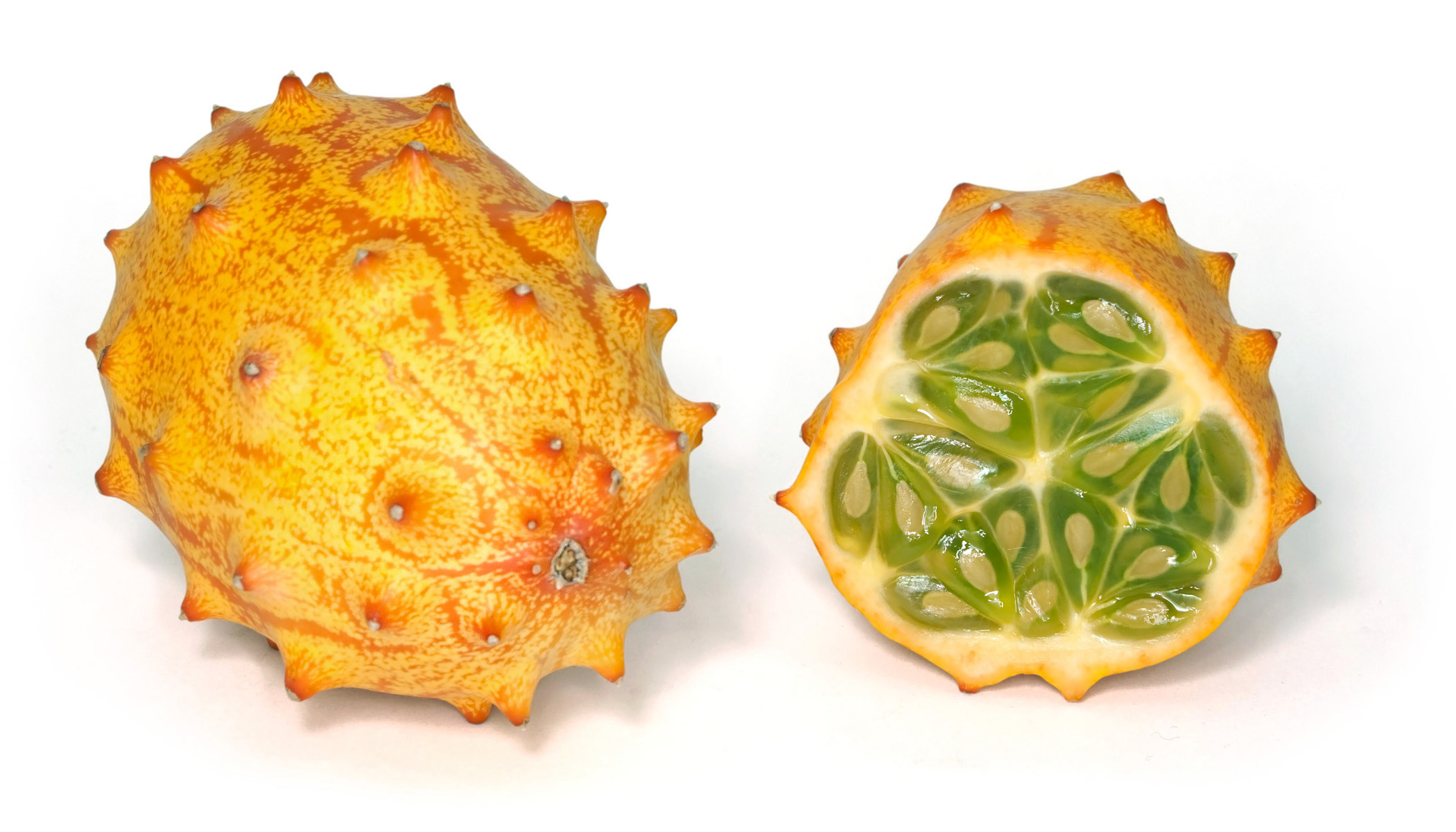
Kaldari [Public domain]
C. metuliferus (Kiwano melon)
I LOVE this fruit. I've walked past it for years before curiousity nudged me to purchase a bright orange spiky fruit. Cut it in half (widthwise, not the long way) and you're greeted by hundreds of lime green seeds. Squeeze the fruit and the seeds will all pop out (it's kind of fun). You can then eat your winnings as a kind of seedy soup. I think it tastes like a combination of lime, banana, and cucumber. It's absolutely amazing.
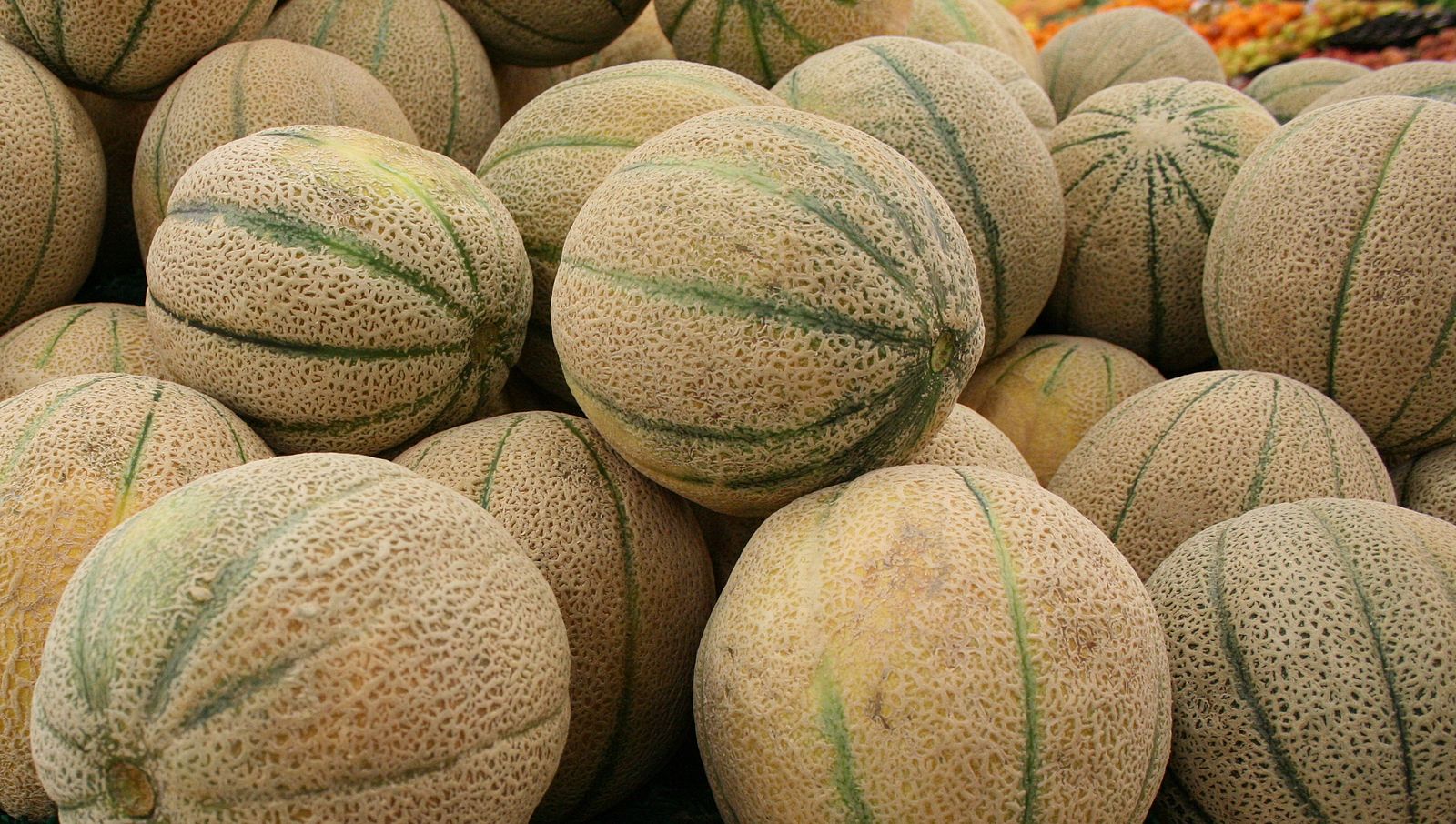
Toby Hudson / CC BY-SA (https://creativecommons.org/licenses/by-sa/3.0)
C. melo var cantalupensis (Cantaloupe)
Apparently this variety was cultivated by Armenians in the 1920s, who knew? These fruits have an outer veiny rind described as "netted." They can be sliced, the inner seeds scooped off each slice, and eaten plain or combined with some prosciutto.
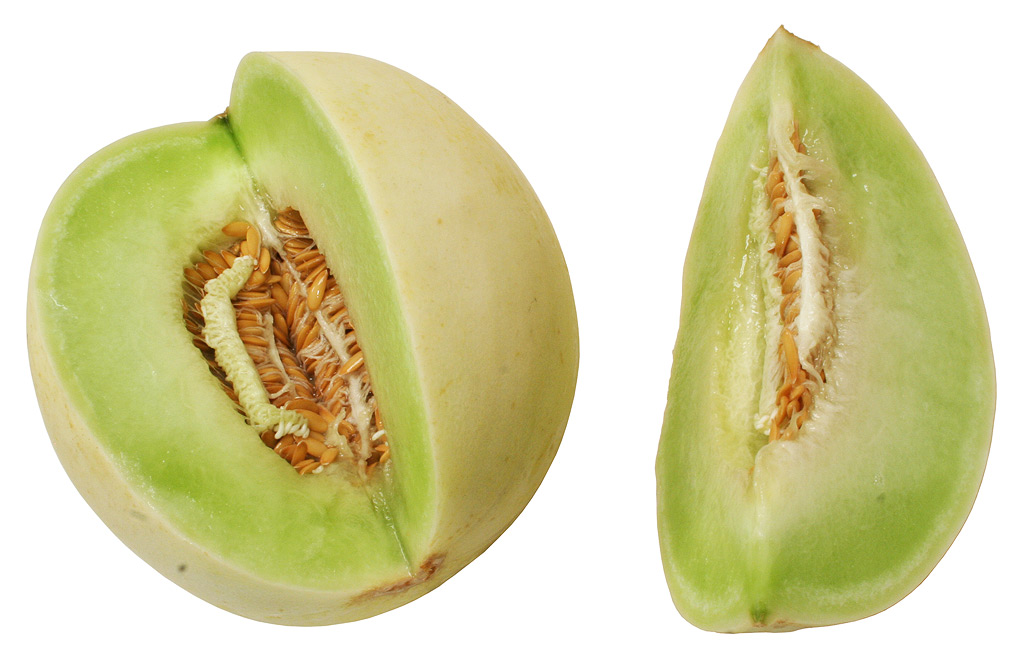
Yotoen / Public domain
C. melo var inodorus (Honeydew)
Another variety of melon, these green melons have a smooth outer rind and green inner flesh. Personally I like them a little less ripe, when they are more crunchy. But some people like them squishier, and I respect them for this choice (even though they're wrong).
Fabales
Fabaceae
Detarioideae
Tamarindus

© Carschten / Wikimedia Commons
T. indica (Tamarind)
It looks like a crunchy brown pea pod, but it hides a sticky chewy meat surrounding multiple seeds with some large fibers. The meat has a strange sour yet subtle taste, and is like edible gum. The fruit originated in Africa but is eaten in Middle East, Mexico, and India. They can be used for cooking, drinks, or turned into candy. Don't forget, the pulp makes a great laxative!
Malpighiales
Clusiaceae
Garcinia
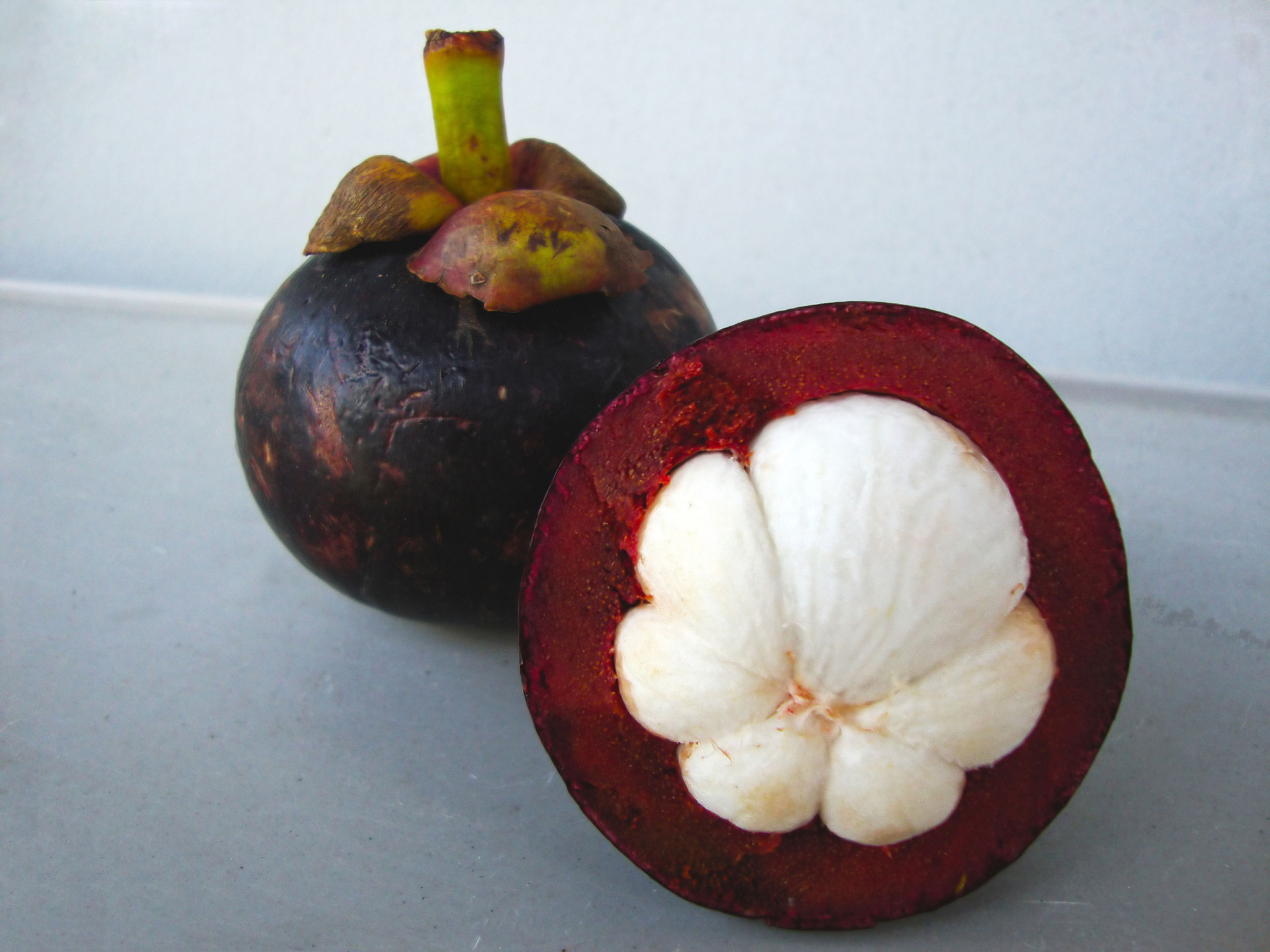
Prenn [CC BY-SA 3.0 (https://creativecommons.org/licenses/by-sa/3.0)]
G. mangostana (mangosteen)
One of my favorite fruits, called "queen of tropical fruits." They've only recently become available in the USA. They're a struggle to eat, as they have a thick (almost woody) purple rind that you have to saw through. Inside are whitish tiny slices, kind of like a mandarin orange. A couple (but not all) of the slices have edible seeds (they're squishy and there's no difference in texture). They're tough to find but quite a treat! Apparently it's used in an antioxidant drink called XanGo.
Passifloraceae
Passiflora

MartinThoma [CC0]
P. edulis (passionfruit)
One of my favorite fruits, I've always been disappointed by how small the fruits were! That is, until I was wandering the grocery store and discovered GIANT passionfruits! They're full of strange stringy yellowish meat/fibers with a very tart and delicious flavor. There's lots of edible seeds which don't taste like much but add some crunchy texture. Just cut in half and scoop with a spoon! There's over 500 species in all different shapes and sizes. The fruit is often processed and concentrated for flavoring, and is great when used in desserts.
Myrtales
Lythraceae
Punica
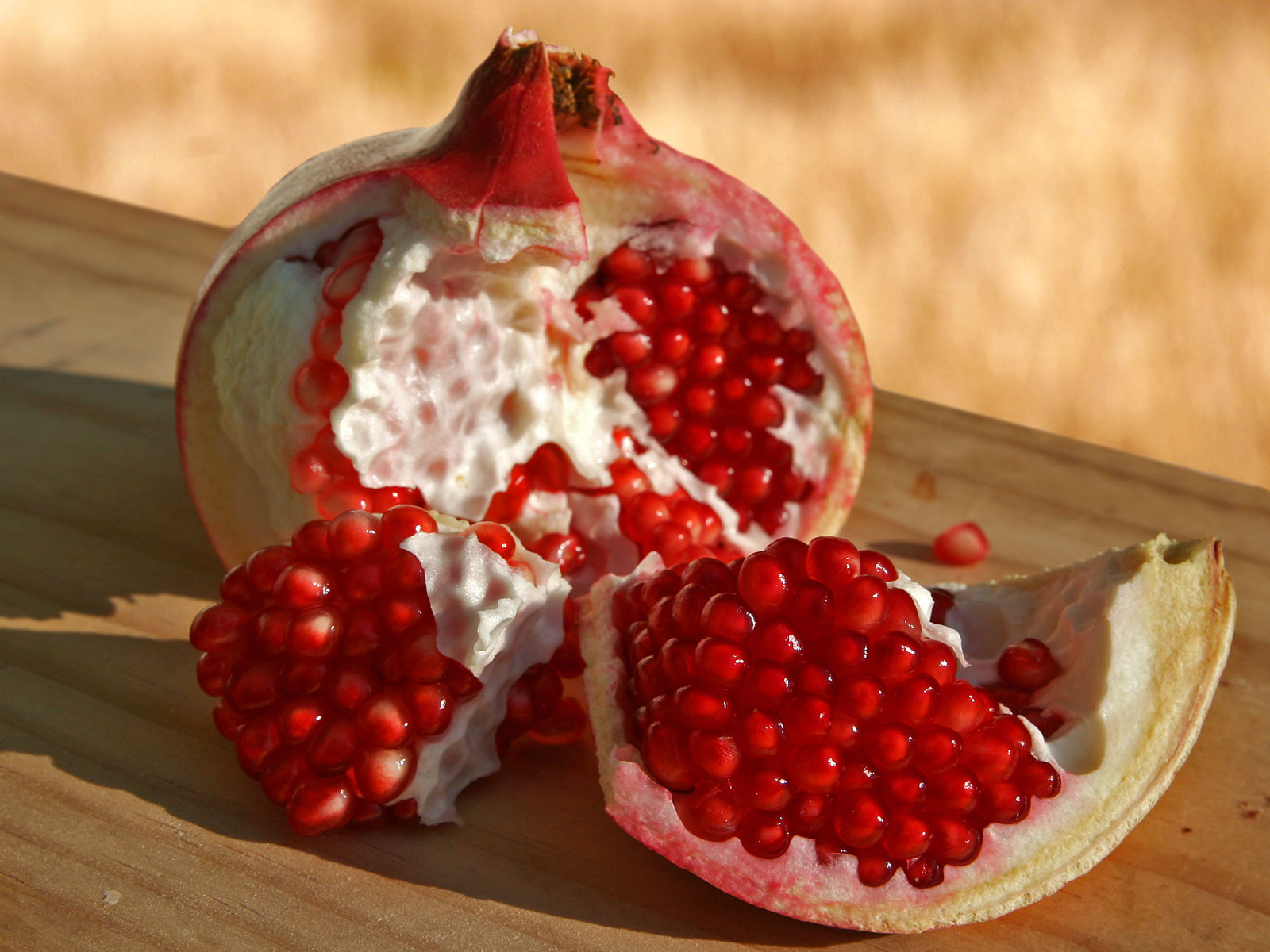
Fir0002 / GFDL 1.2 (http://www.gnu.org/licenses/old-licenses/fdl-1.2.html)
P. granatum (pomegranate)
A favorite around Rosh Hashanah time, and such a strange fruit. So there's a thick fibrous outer skin, which you crack open to find hundreds of tiny seeds surrounded by a tiny amount of delicious red juicy pulp. But you have to pick them out amonst the fibrous septa throughout the fruit! Always a struggle, but the reward is often worth it. The seeds can be eaten raw or turned into juice. It is an excellent source of Vitamin C and antioxidants.
Myrtacae
Acca
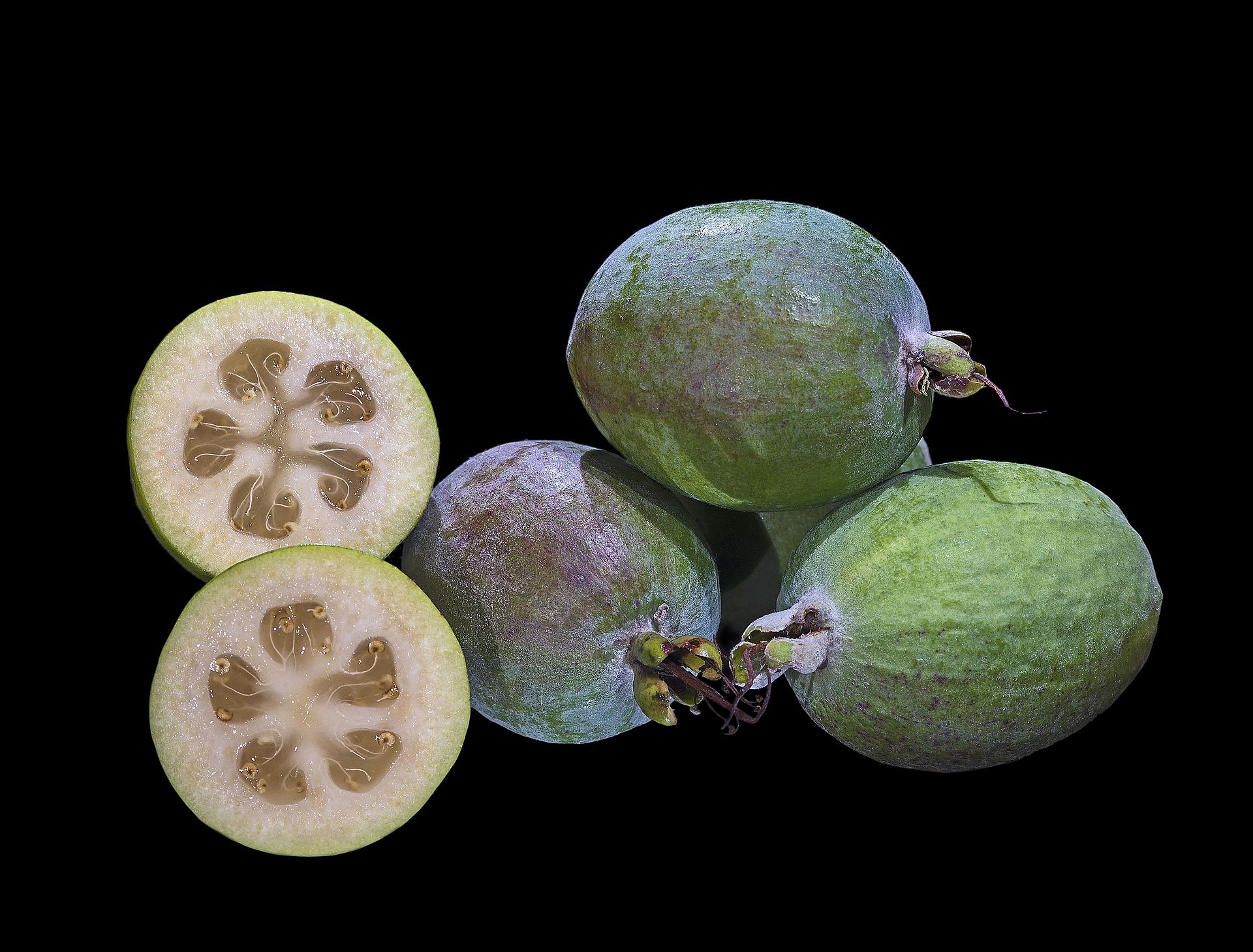
https://upload.wikimedia.org/wikipedia/commons /0/08/Acca_sellowiana_Fruit_MHNT_Fronton.jpg
A. sellowiana (Feijoa)
I tried it once and I wish it was available more often! It looks like an elongated guava on the outside and looks similar on the inside. However, I think it tastes more delicious and full of flavor than a guava does. If I recall, there was some hint of strawberry. It originated in South America but is commonly grown in New Zealand.
Oxalidales
Oxalidaceae
Averrhoa
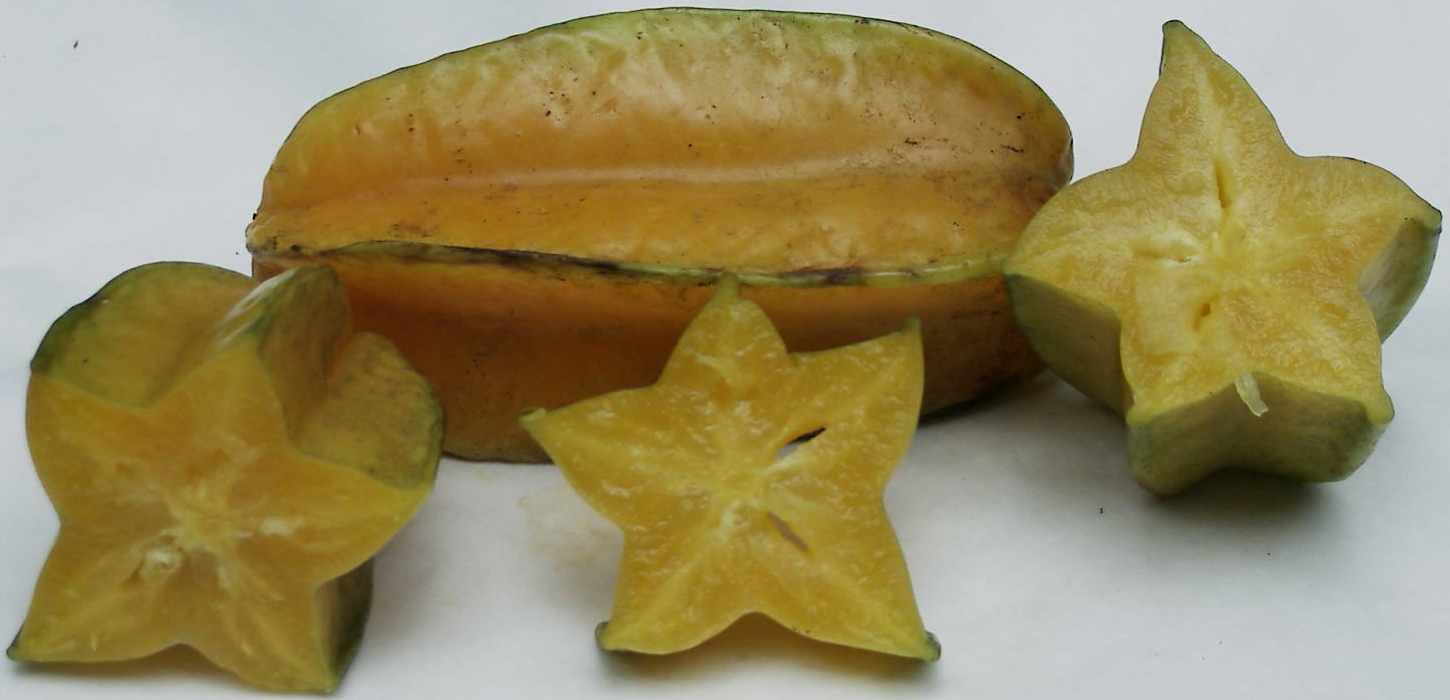
[CC BY-SA 3.0 (http://creativecommons.org/licenses/by-sa/3.0/)]
A. carambola (starfruit)
This fruit is literally star shaped. It's very crisp, crunchy, and tart. I like eating the little star slices. Fun story, my mom loves me so much, she spent the time and effort to peel this entire fruit because she thought that's how to eat it (I didn't realize she did it until after the fact). They are often used as a substitute for apples in recipes. When yellow, they are ripe to eat. Even when not ripe, they can be eaten with salt.
Rosales
Moraceae
Artocarpus
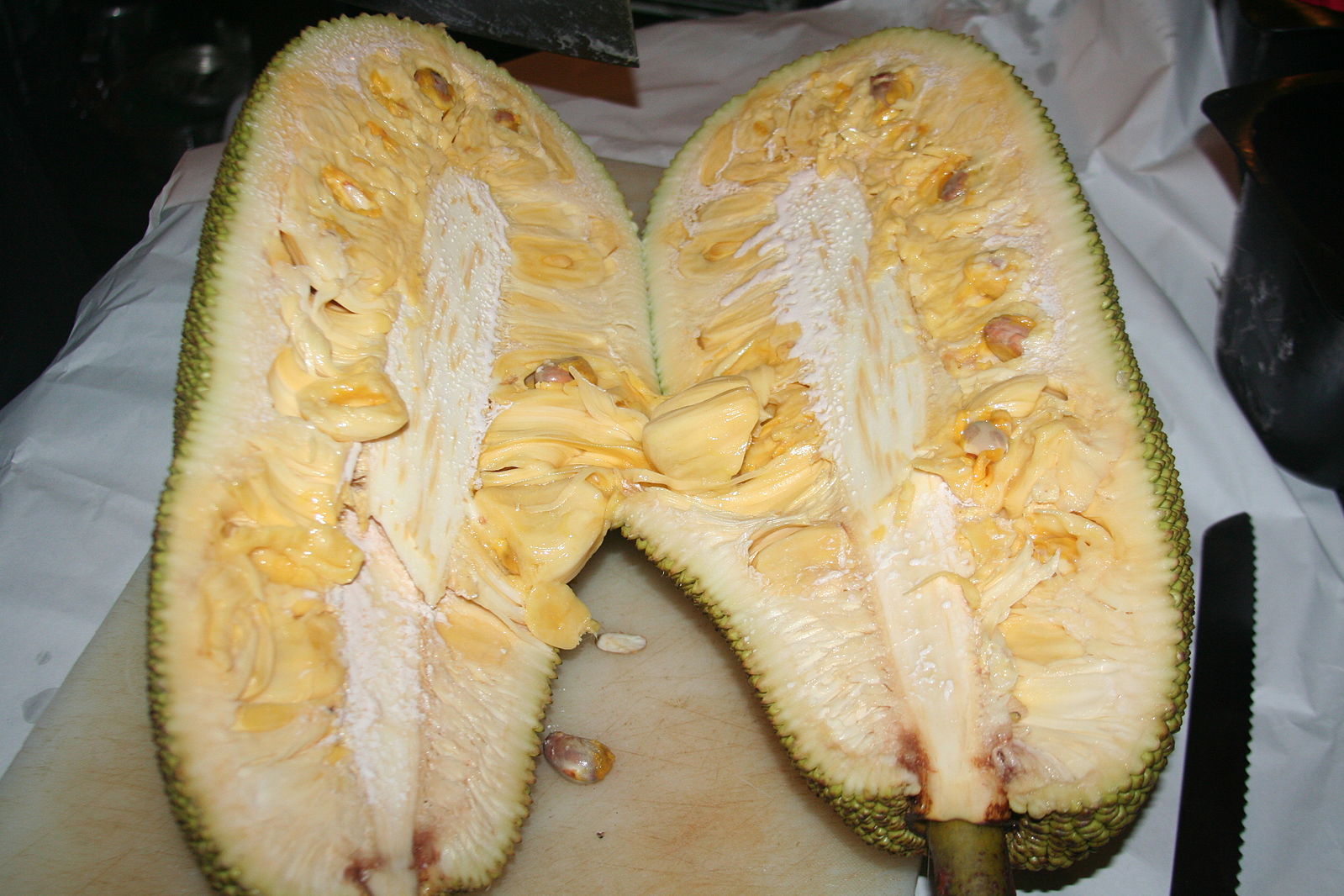
Raelcohen [CC BY-SA 3.0 (https://creativecommons.org/licenses/by-sa/3.0)]
A. heterophyllus (jackfruit)
I LOVE JACKFRUIT. It's the largest tree-growing fruit in the world and can weigh more than 110lbs. When cut open, the fruit is full of yellow "pods" (technically called bulbs). These can be scooped/popped out of the rind and eaten. The bulbs have a very meat-like texture but can be extremely sweet and delicious. Vegans actually use them for pulled pork and other meat substitutes. If it smells strong, it is due to presence of capron acid. I've tried it fresh and whole, fresh and sliced, or canned. For beginners, highly recommend it canned.
Ficus

Kyle the hacker, WikiMedia Commons
F. carica (figs)
Did you know some vegans won't eat figs? It's because some figs are fertilized by wasps that actually land in the fig and die after trying to lay eggs! You won't find any wasp bits, because the wasp gets absorbed by the fig, but also the common fig doesn't actually use wasp fertilization. More interesting, the "seeds" are actually hundreds of tiny fruits encased in the outer flesh, called a syconium. Figs can be eaten raw, dried, as jam, or other items. They are a great source of fiber and calcium. There are hundreds of fig varieties.

Miloslav Bahna / CC BY-SA (https://creativecommons.org/licenses/by-sa/4.0)
Morus (mulberry)
I only recall trying these once, but they had a more subdued, less tart, and slightly grittier taste than blackberries, which I kind of liked. Interestingly, they are not closely related to the blackberry at all. The main food plant is the black mulberry. Not to be confused with the white mulberry, which is used in China as food for the leaf-eating silkworm.
Rhamnaceae
Ziziphus
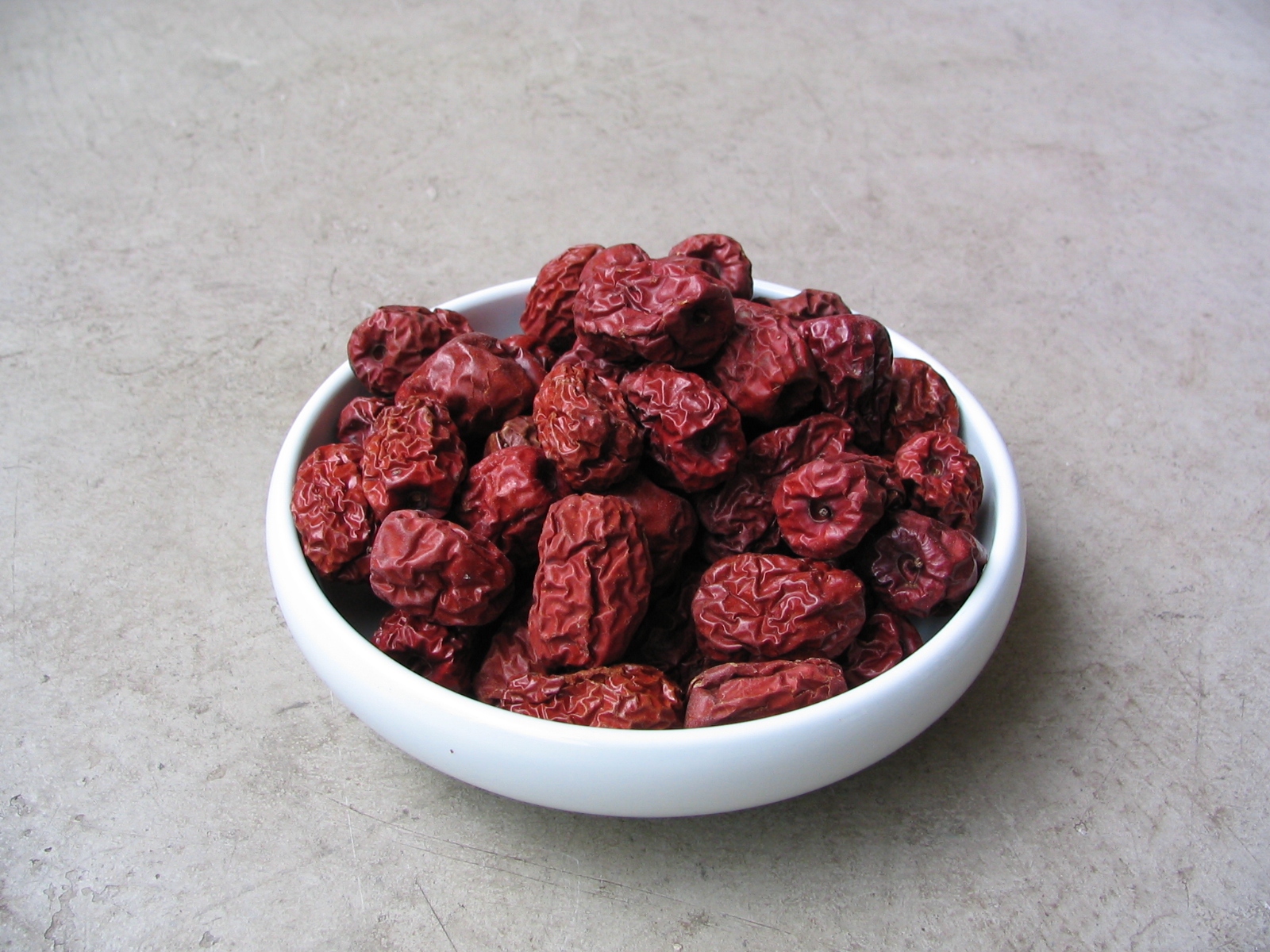
Marco Schmidt [CC BY-SA 2.5 (https://creativecommons.org/licenses/by-sa/2.5)]
Z. jujuba (jujube)
I've tried these both fresh and dried, and they just don't do it for me. Fresh, they have a kind of mealy texture and not much taste. Dried, there isn't much meat and there's a seed in every one. Not a fan. It's commonly grown and eaten in China.
Rosaceae
Cydonia
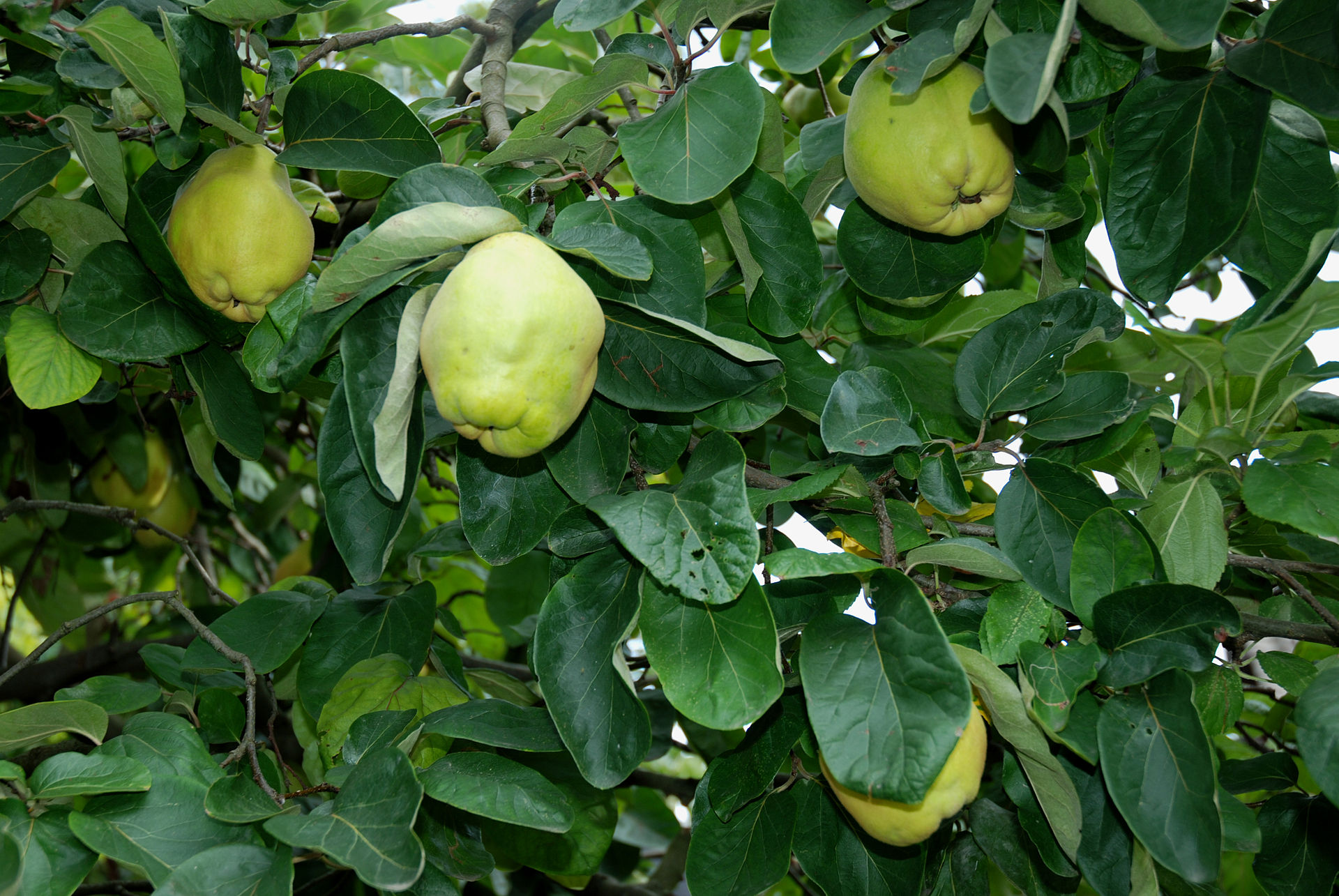
Mbdortmund [CC BY-SA 3.0 (http://creativecommons.org/licenses/by-sa/3.0/)]
C. oblonga (quince)
You can't eat these raw. They're cooked/boiled and turned into a jelly-like dessert called "membrillo." I tried to make it once, just turned into some pinkish gloop with way too much sugar in it.
Eriobotrya

Jean-Pol GRANDMONT [CC BY-SA 3.0 (https://creativecommons.org/licenses/by-sa/3.0)]
E. japonica (Loquat)
I've tried a loquat once, and it was delicious (highly recommend). It kind of looks like an apricot but has a bunch of small seeds inside. It can be eaten whole and raw, it's kind of meaty (also like a fresh apricot) but tastes even better. Don't eat the seeds, they contain cyanide-related compounds.
Fragaria
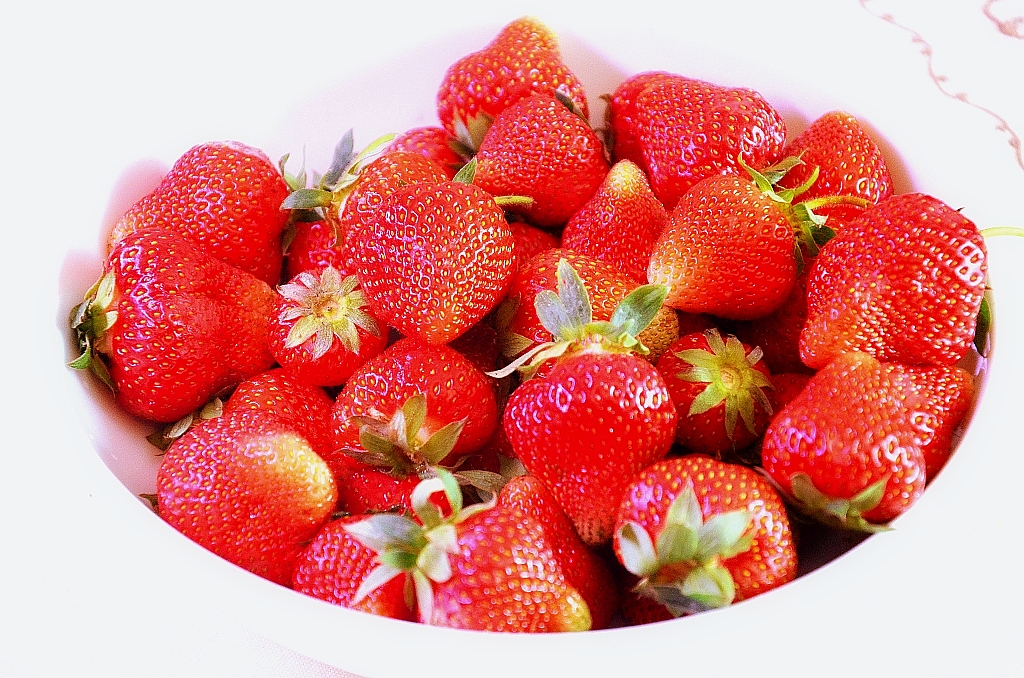
Silar / CC BY-SA (https://creativecommons.org/licenses/by-sa/3.0)
F. x ananassa (strawberry)
The famous strawberry is actually a hybrid of species from both the Eastern and Western hemispheres. The seeds are the real fruit, and the flesh is part of the flower. As most people know, strawberries go bad quickly, so eat them fast! They are delicious raw although some find them too sour and need a little sugar.
Malus

George Chernilevsky / Public domain
M. x domestica (apple)
It's the fruit that keeps doctors away! Possibly the most popular fruit in the world, there are loads of cultivars to make this fruit more edible than its sour crabapple-like ancestors. There are thousands of potential cultivars. They can be eaten raw, cooked, turned into cider or vinegar. Which variety is your favorite?
Pyrus

Keith Weller, USDA ARS / Public domain
P. communis (pear)
The pear is actually native to Europe. Excellent raw (I like them on the crunchy side), they can also be cooked for dessert or combined with cheese or chocolate.
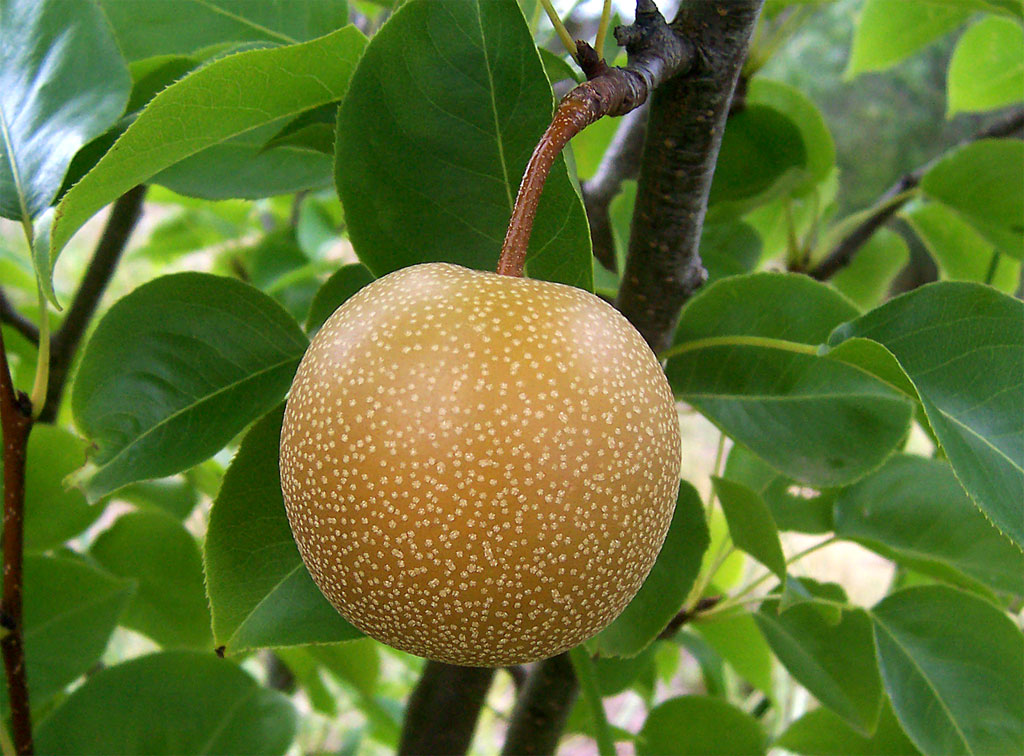
Pazuzu, wikimedia commons
P. pyrifolia (Asian pear)
Also known as "sand pears" because their flesh has a noticeably gritty texture, due to higher concentration of lignin. However, I find them cool, crunchy, and extremely refreshing, so they are always my first choice over an apple or pear. The chemical composition is pretty much the same for Asian pears or regular pears.
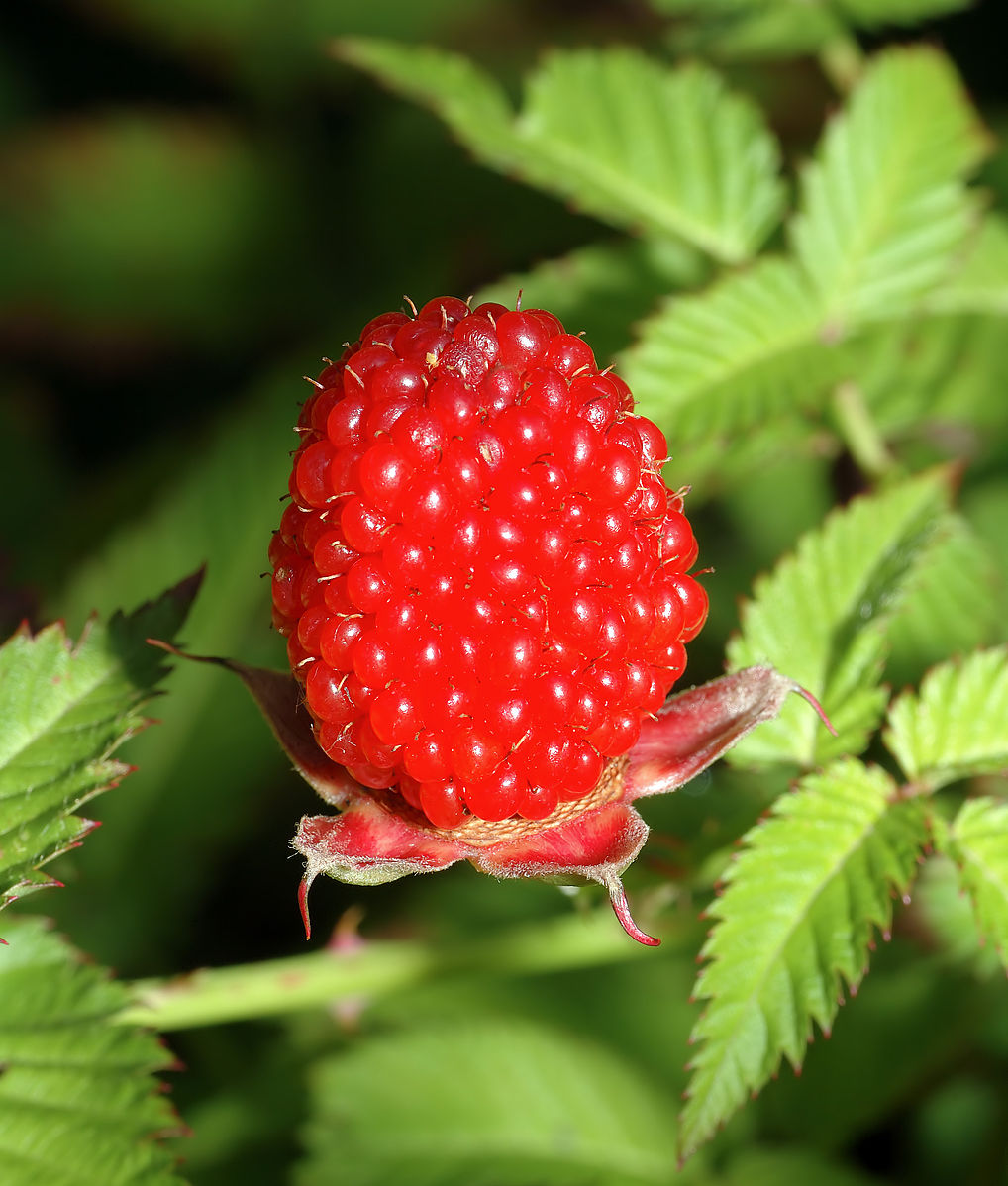
André Karwath aka Aka / CC BY-SA (https://creativecommons.org/licenses/by-sa/2.5)
Rubus (raspberry, blackberry)
This genus includes raspberries, blackberries, among others. Each raspberry is made of small fruits, and the tiny hairs help hold fruits together. Suprisingly, the largest producer of raspberries is Russia. Loganberry, a hybrid of blackberry and raspberry, is used to make a well-known juice (called loganberry) that is popular in Buffalo!
Sapindales
Anacardiaceae
Mangifera

asitkghosh@yahoo.com Thaumaturgist / CC BY-SA (https://creativecommons.org/licenses/by-sa/3.0)
M. indica (mango)
Mangoes are one of the more famous tropical fruits. There are a whole variety, but usually come in a yellow/orange color. I'm very partial to the Ataulfo variety, which I think tend to be slightly sweeter and easier to eat for some reason. They need to be peeled and the fruit cut off the large flat/ribbed "stone." Mangoes can be eaten fresh (for sure) or as a whole variety of methods. The mango is the national fruit of India, Pakistan, and the Philippines! Some people are allergic to uroshiol, a chemical found in the mango peel that is also found in poison ivy and poison sumac. I really like the ataulfo variety.
Rutaceae
Citrus

Bcohn [CC BY-SA 3.0 (https://creativecommons.org/licenses/by-sa/3.0)]

Kaldari [Public domain]
C. medica (etrog, Buddha's hand)
I've never actually eaten one of these, but etrogs are used during the Jewish holiday of Sukkot. They are supposed to have a little stem nubbin called a "pitom," and they cost a ton of money and if the pitom is broken it's not pure or useable. They aren't really edible, but you can turn them into jam. The Buddha's Hand is one of the trippiest fruits you've ever seen. The peels of these varieties can be candied.
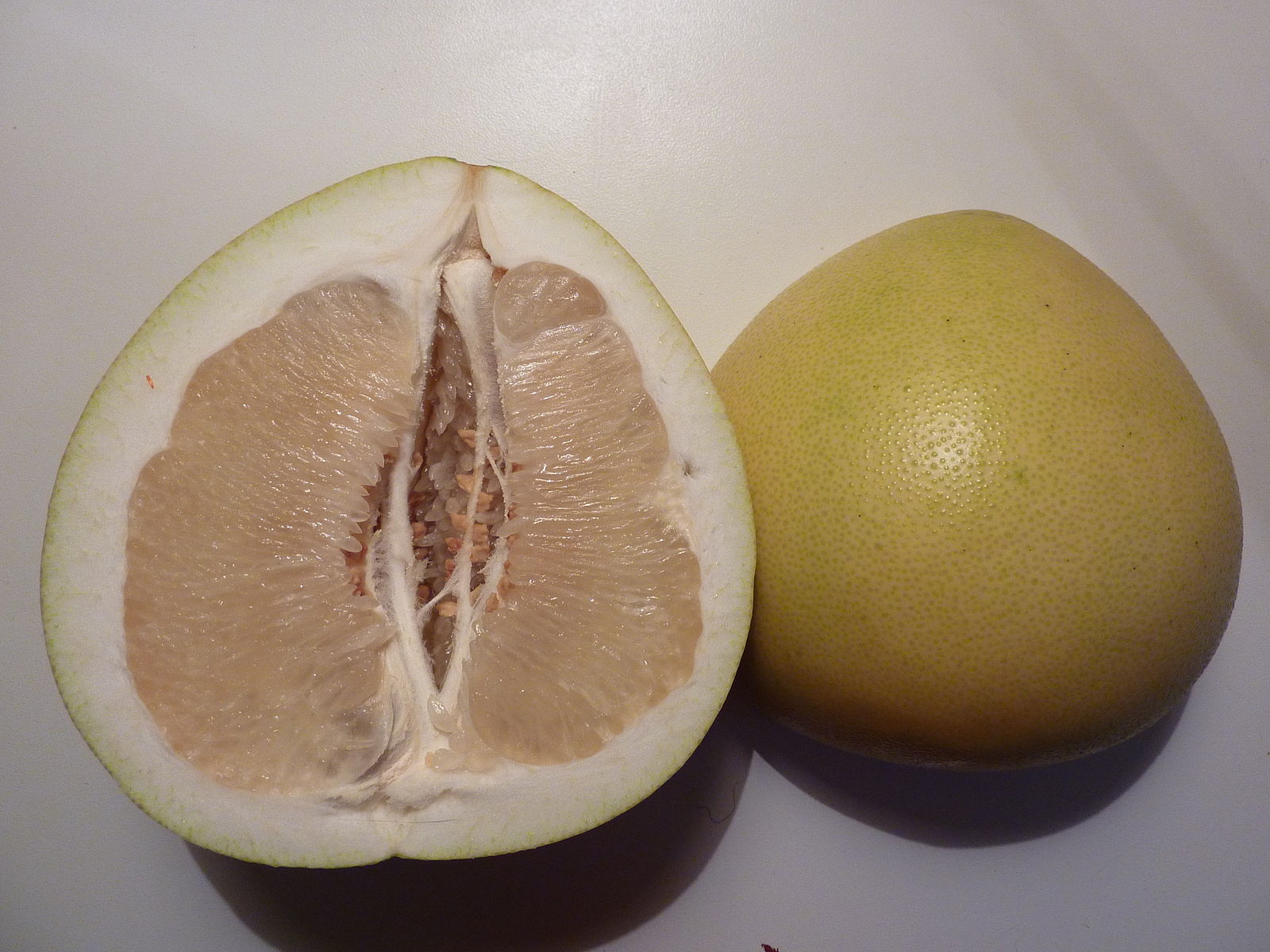
© Salix / Wikimedia Commons
C. maxima (pomelo)
Can't believe I wasted all those years eating grapefruit, when I could have been eating Pomelo, its larger and sweeter cousin. It is the largest citrus fruit and is a good source of fiber.
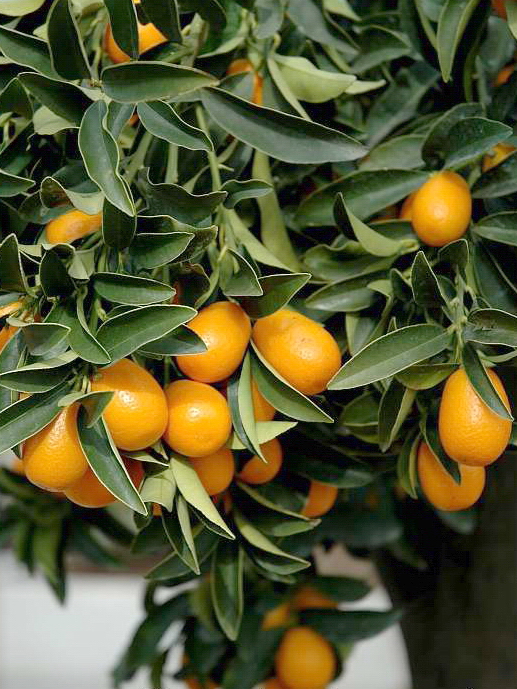
Archive [CC BY-SA 3.0 (http://creativecommons.org/licenses/by-sa/3.0/)]
C. japonica (kumquat)
These little orange fellers are bite sized. They're sour but good. However, I ate them a lot for a while and got sick of them. They don't need to be peeled, you can eat the skin but it's bitter and sometimes leaves an aftertaste. They have tiny seeds but you can eat those too. There are 3-4 main cultivars.
Sapindaceae
Dimocarpus
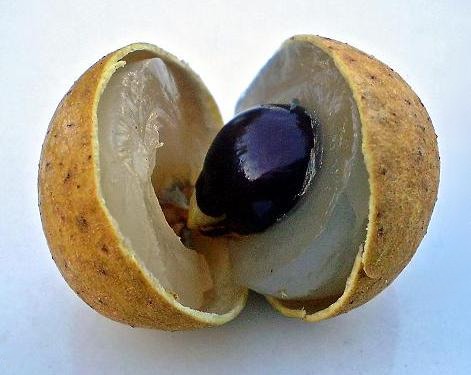
Surukuku (Nelson Ramos-Lopes) / Public domain
Dimocarpus longan (longan)
This is my favorite fruit out of all the others, mainly because the skin easily peels off making the flesh easy to eat. The name "longan" is chinese for dragon's eye, which is what the half-fruit kind of looks like.
Litchi
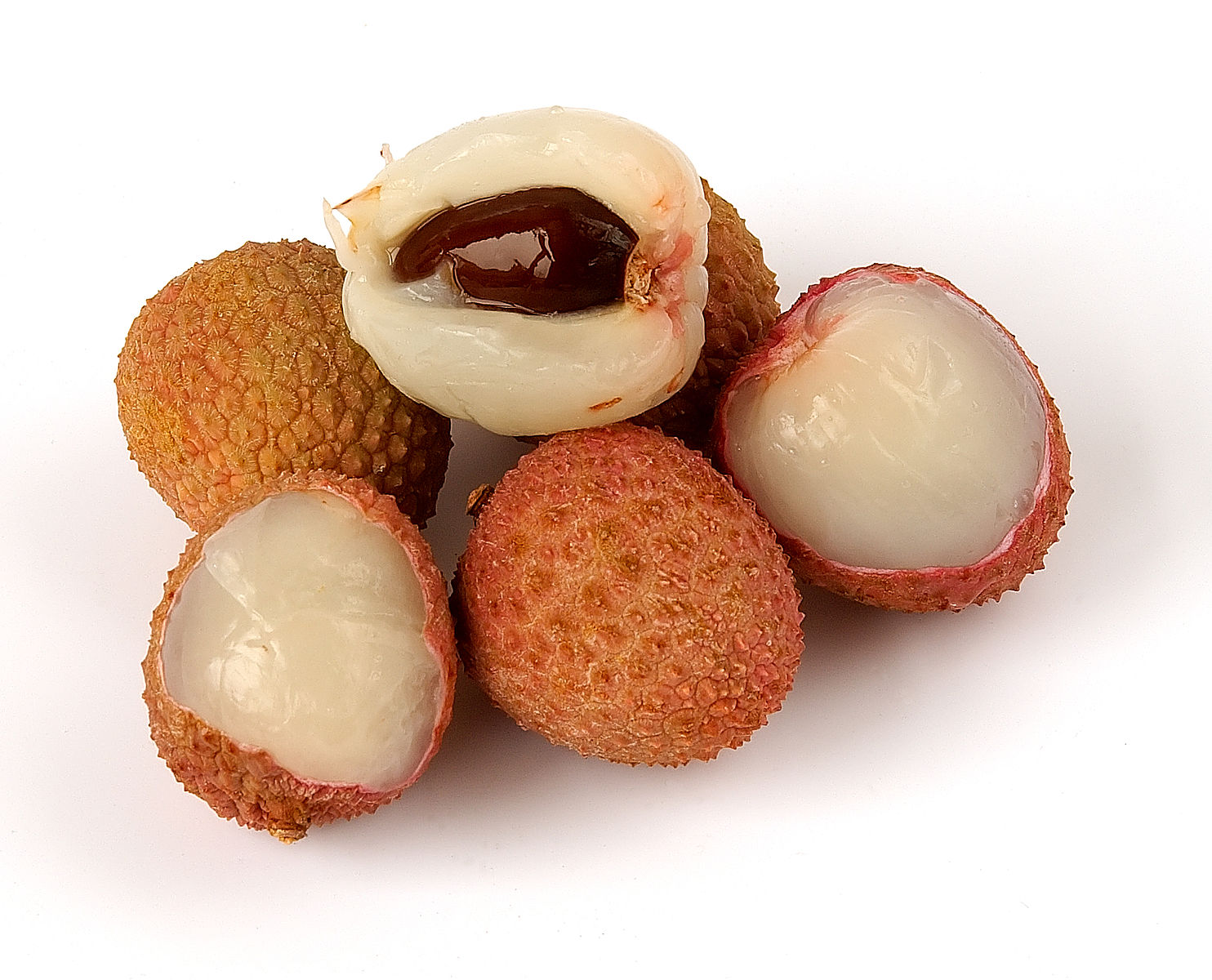
I, Luc Viatour / CC BY-SA (http://creativecommons.org/licenses/by-sa/3.0/)
L. chinensis (lychee)
Probably the most well known of similar fruits, they have a bumpy outer skin hiding a fleshy white/clear fruit with a single seed. I like to eat them either fresh or canned. They are native to China. Don't eat the seed, it's toxic.
Melicoccus
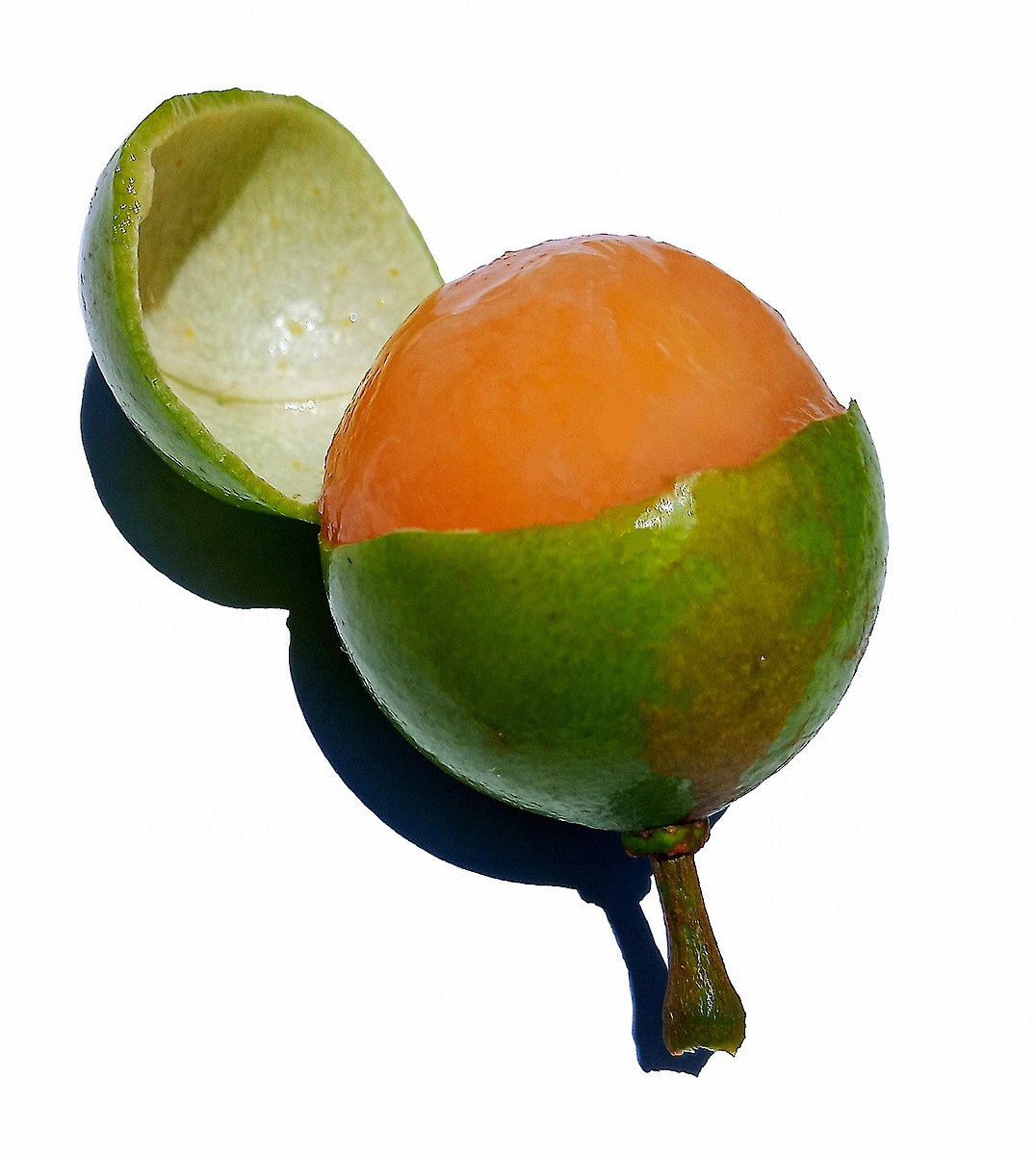
Filo gèn' / CC BY-SA (https://creativecommons.org/licenses/by-sa/4.0)
M. bijugatus (Spanish lime)
These little guys are an uncommon find in the US. From far away they look like tiny limes, but the rind is actually a thin fibrous peel, hiding a squishy, gelatinous yellow/orange fruit on the inside with a sweet taste and small seed. A fun find!
Nephelium
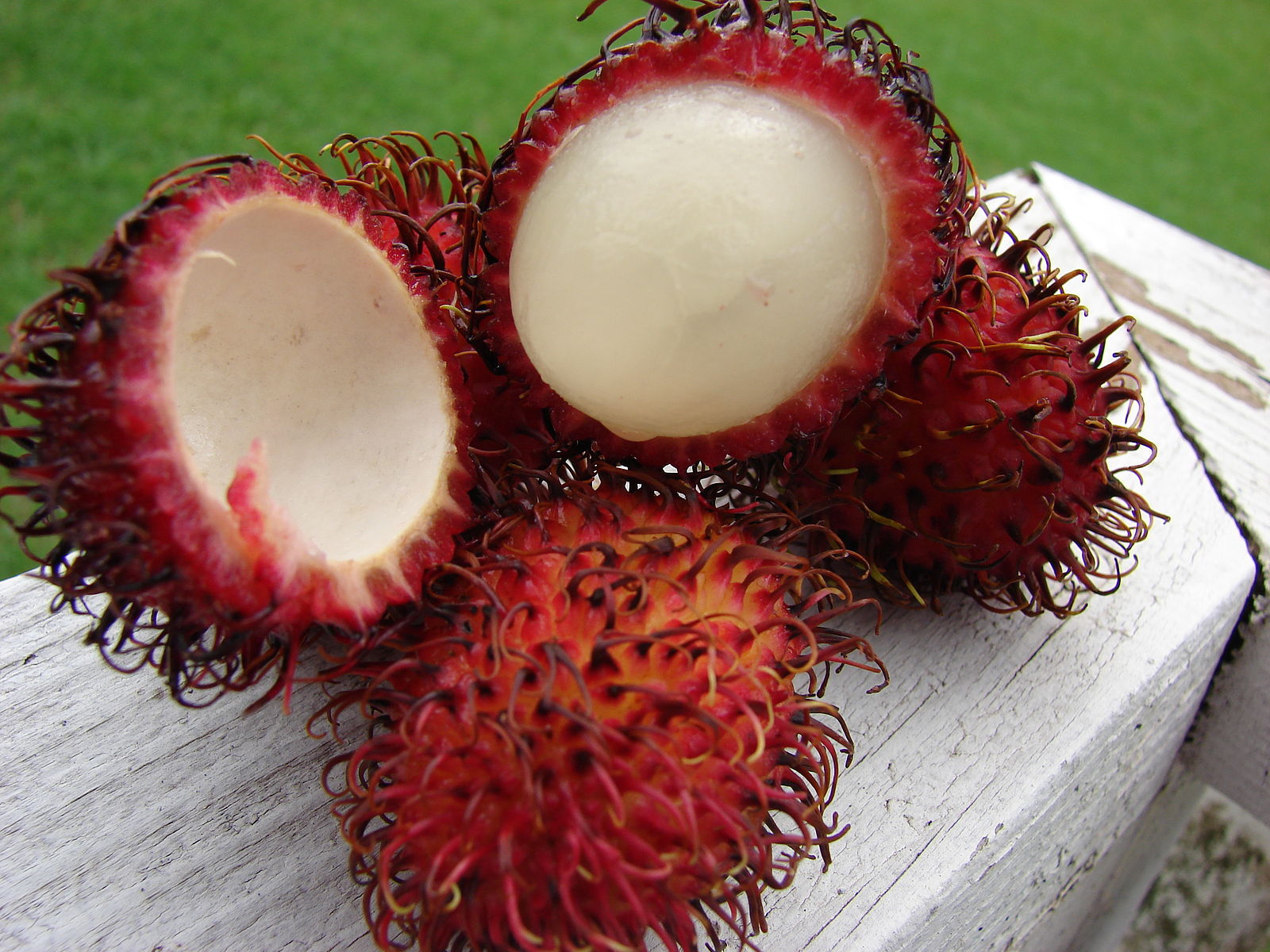
Forest & Kim Starr / CC BY (https://creativecommons.org/licenses/by/3.0)
N. lappaceum (rambutan)
Whoa Black Betty...rambutan. The name comes from rambut, the Malaysian word for hairy. They have a hairy exterior but the inside tastes pretty similar to lychee or longan. They can be eaten raw, with either the outside popped off or cutting through the skin with a knife and taking the top off to use the bottom as a tiny cup.
Saxifragales
Grossulariaceae
Ribes
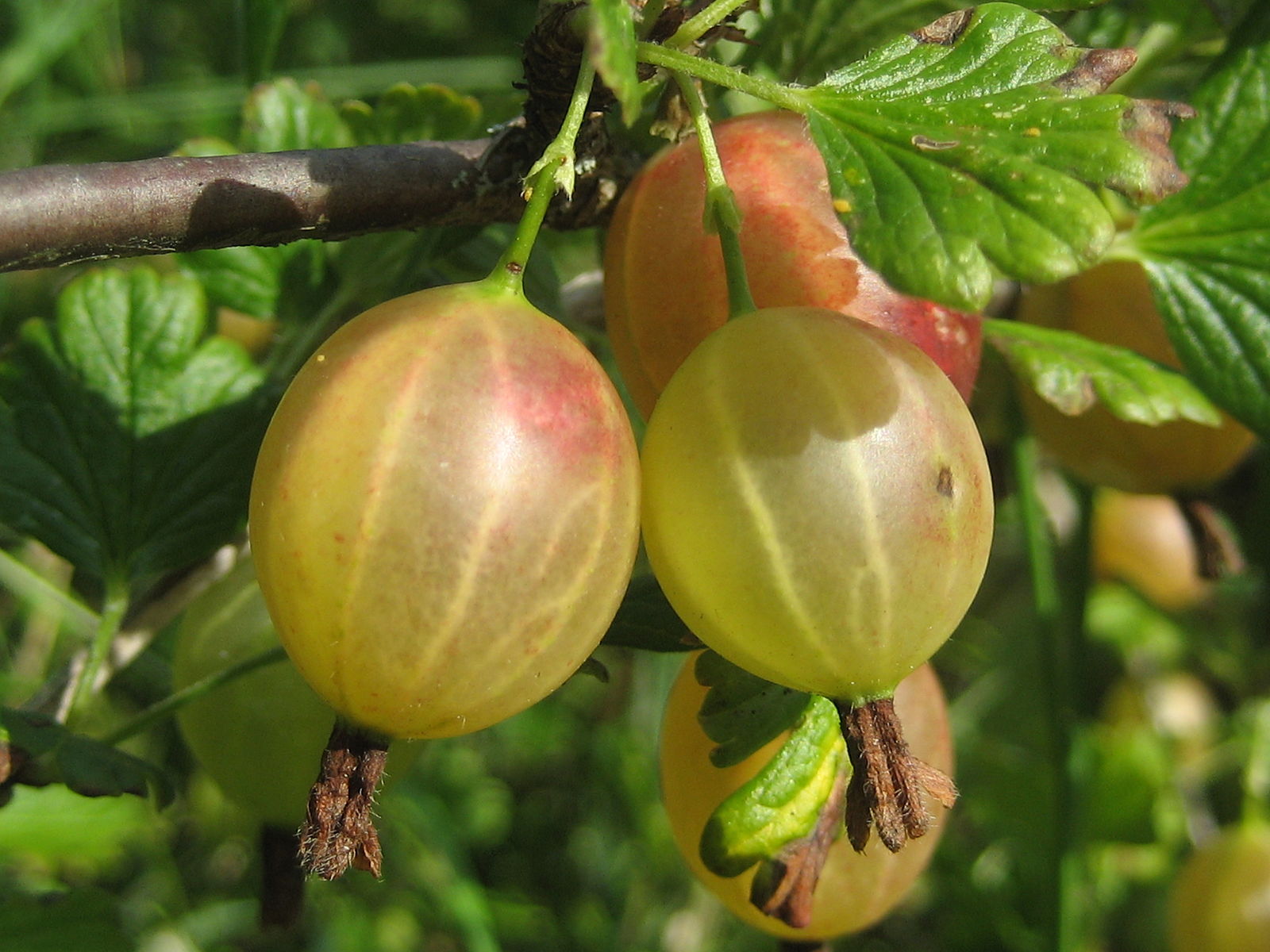
Pavel Leman / CC BY-SA (https://creativecommons.org/licenses/by-sa/3.0)
R. uva-crispa (gooseberry)
Like grapes, but I like these better. They even look like grapes, but have stripes and tiny little fruit hairs. Delicious. They can be eaten raw or turned into pie, jam, etc.
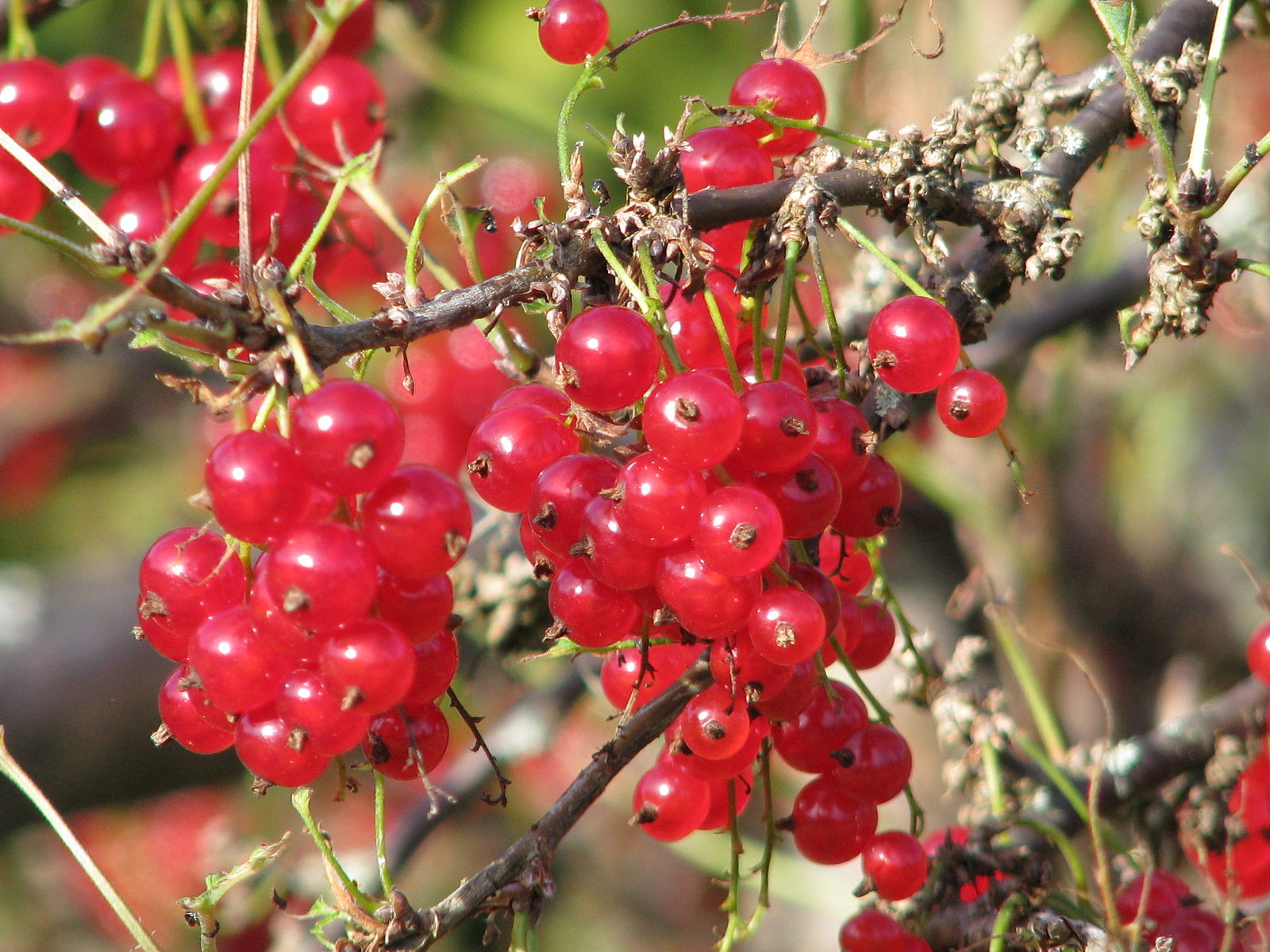
Нацку / CC BY-SA (https://creativecommons.org/licenses/by-sa/3.0)
R. rubrum (redcurrant)
Tried these a couple times from a farmer's market. Each one is small but packs a tart punch. You can use them for cooking but I like to eat these tiny dudes fresh.
Vitales
Vitaceae

fir0002 flagstaffotos (http://www.gnu.org/licenses/old-licenses/fdl-1.2.html)
Vitis (grapes)
One of the most popular fruits both directly and indirectly, this is what you have to thank for the existence of wine. Grapes originated in the Caucasus region, then spread to Egypt, Greece, and the rest of Europe. The small fruits grow on vines. 65% of grapes are used for wine, with the rest eaten fresh, dried as raisins, or turned into juice. Apparently there are over 10 thousand cultivars! Go enjoy, in whichever (un)fermented form you prefer.
Magnoliids
Laurales
Lauraceae
Persea

Muhammad Mahdi Karim / GFDL 1.2 (http://www.gnu.org/licenses/old-licenses/fdl-1.2.html)
P. americana (avocado)
Ah yes, the avocado, every millenial's favorite food. It comes from the Aztec word for "testicle." They are high in fat, potassium, and protein, great! They have a lumpy exterior hiding creamy buttery green meat on the inside with a single seed. As we all know, they ca be put on anything, seasoned with lime juice and salt, or turned into the ever popular guacamole. Although they go well with most foods, they can become bitter if cooked.
Magnoliales
Annonaceae
Annona
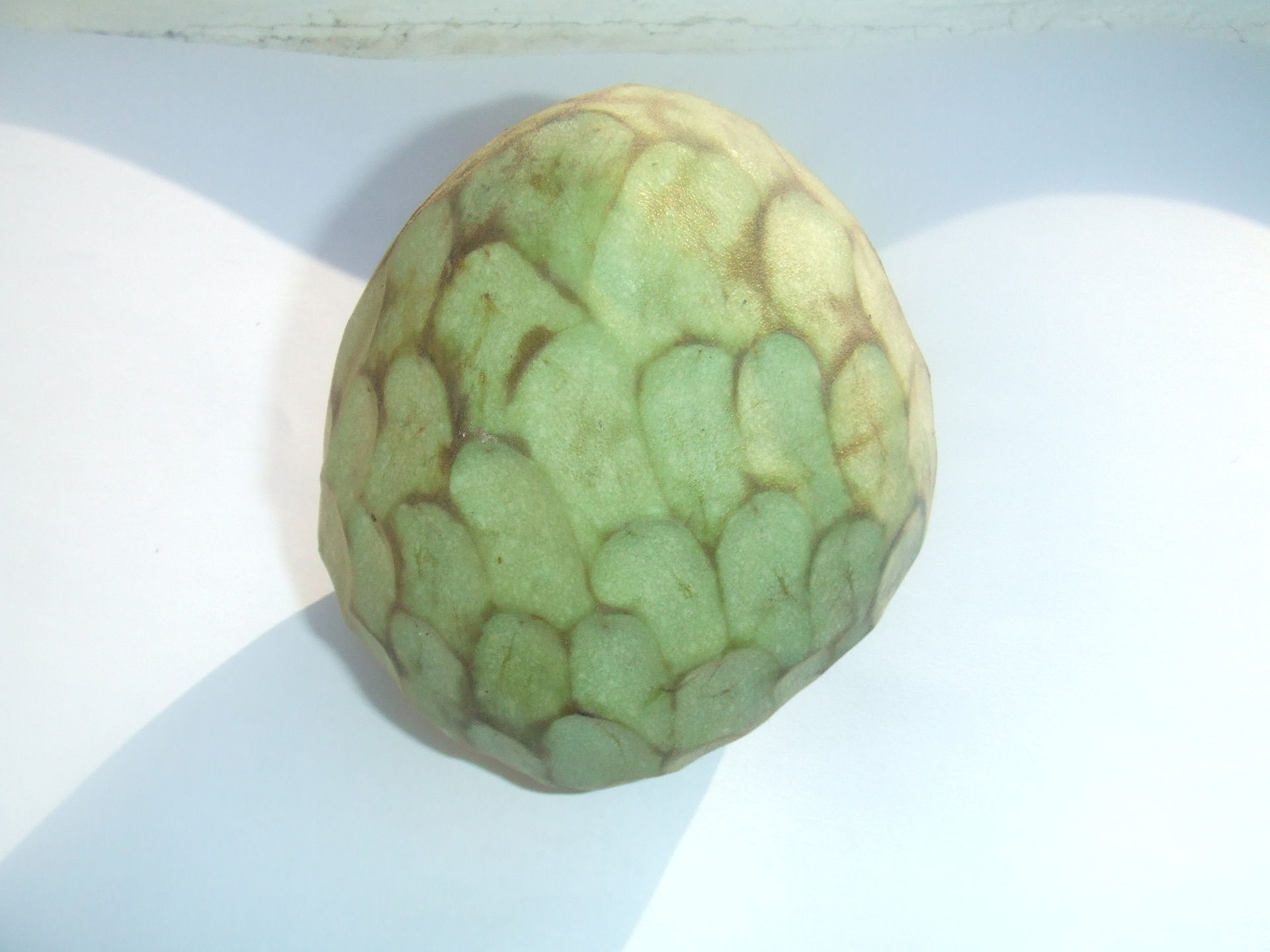
Hans B. [CC BY-SA 3.0 (http://creativecommons.org/licenses/by-sa/3.0/)]
A. cherimola (Cherimoya)
I tried one of these at farmer's market in LA. It was fleshy and sweet. I've bought them a couple times in Dallas, they never seem to taste as good as the original. Whatever you do, DO NOT REFRIGERATE!!! For whatever reason if they go in the fridge, they never ripen and taste ridiculously bitter. I learned this after the fact. The flesh is often described as creamy. It has a relative called a custard apple, so I call this a "mush apple." They also look like artichokes with their scalelike markings. Don't eat the seeds, they are poisonous.
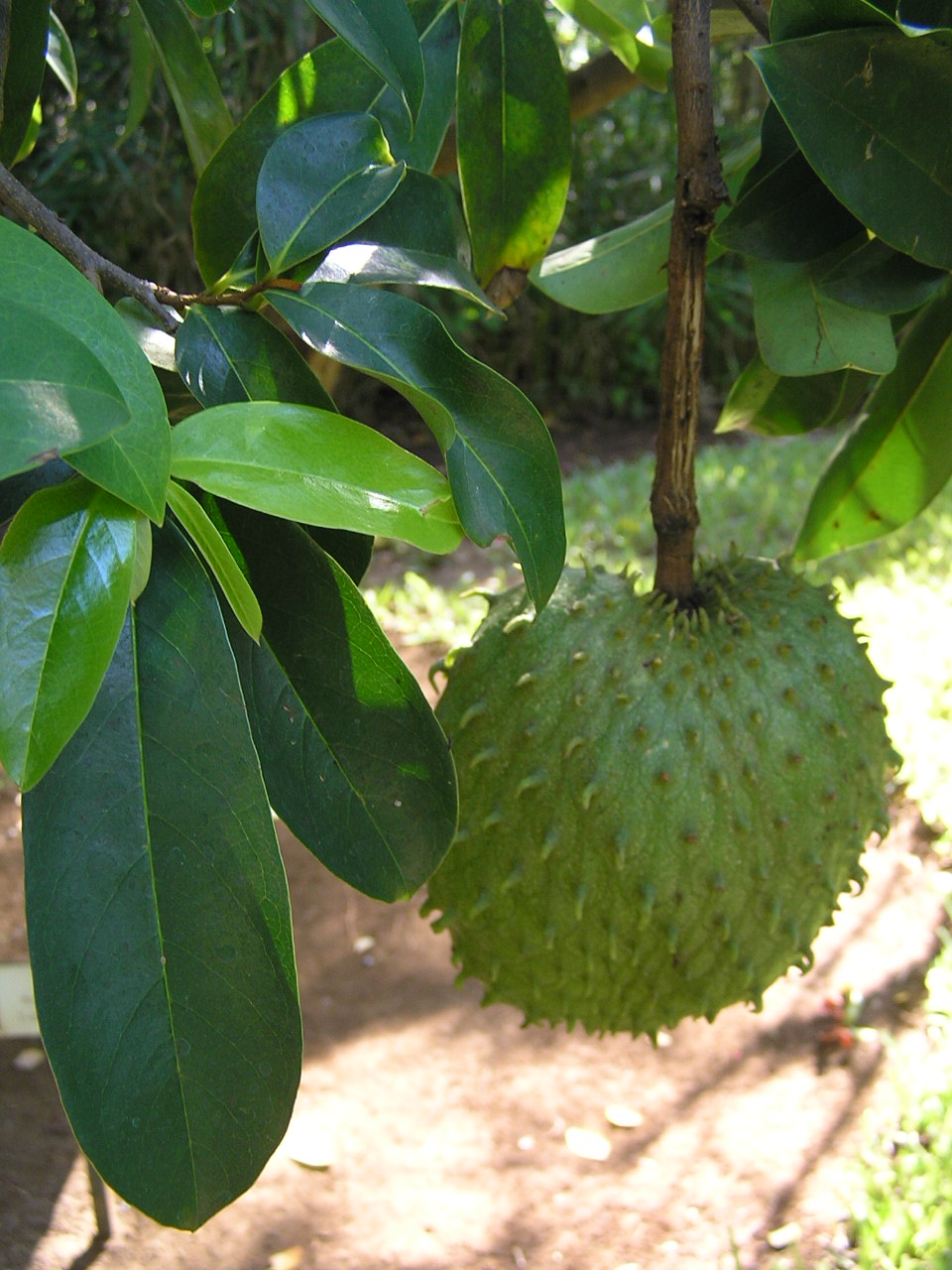
Damien Boilley from suburbs of Paris, France [CC BY 2.0 (https://creativecommons.org/licenses/by/2.0)]
A. muricata (soursop)
I tried this recently and I think it might be even better than a cherimoya. It's also fleshy, and I think it kind of tastes similar to a peach, although other people say pineapple or banana. It's loaded with seeds, but you can easily put a chunk of fruit in your mouth and spit out the seeds. I've tried the juice before, and it also comes canned. However, don't be surprised when you open the can and it's just whitish mush. Apparently this is how it comes, but the first time I bought it, I thought it had rotted or something. Apparently they can grow up to 6lbs.
Psidium

Number55, WikiMedia Commons
Psidium guajava (guavas - white and red)
Lots of different kinds of guavas, but the most common are pretty small. They can have white or pink flesh with a creamy texture. The skin is a little tart, and there are a bunch of very hard seeds within the fruit. It is popular raw as well as juice. It can be turned into jelly and paste. The fragrance comes from eugenol, an oil also found in cloves. It's a great source of Vitamin C.
Monocots
Arecales
Arecaceae
Phoenix

Hans Hillewaert
P. dactylifera (date)
Dates grow on a type of palm and are a small sugary fruit surrounding a single seed. They are delicious fresh or dried. Apparently there are three types, hard soft and semidry, with the last being the most popular. Although mostly sugar, they are a good source of potassium and magnesium. They are mainly grown in Egypt and Iraq. The date tree grows 100ft (30m) tall, and can grow 150lb (70kg) fruit per year.
Poales
Bromeliaceae
Ananas

Nick Lott (Nicklott 20:09, 20 Apr 2005 (UTC)) [CC BY 2.0 (https://creativecommons.org/licenses/by/2.0)]
A. comosus (pineapple)
I like to make roasted pineapple and blackened salmon tacos, highly recommend. Lots of uses, including pina coladas (virgin or otherwise). The Spanish colonizers thought it looked like a pinecone, hence pina. It contains bromelain, a protein that can act as a meat tenderizer and is apparently approved for use in Europe to remove dead skin from burns. They used to be extremely expensive and were a status symbol. They were also a symbol for hospitality, hence why you may see pineapple emblems on people's doors.
Zingiberales
Musaceae

Enzik / CC BY-SA (http://creativecommons.org/licenses/by-sa/3.0/)
Musa (bananas)
A fruit almost everyone is familiar with. The actual fruit is technically a long curved berry and are usually seedless. Bananas are hybrids of M. acuminata and M. balbisiana. Sweeter varieties are referred to as bananas, whereas starchier cultivars used for cooking/frying are called plantains. Bananas are an excellent source of carbs, fiber, Vitamins B and C, potassium, and magnesium. Interestingly, oranges are a better source of potassium than bananas. More interestingly, fruits ripen through production of ethylene gas. Bananas produce more of this gas than other fruits, which is why you can ripen other fruits by putting them in a bag with a banana!